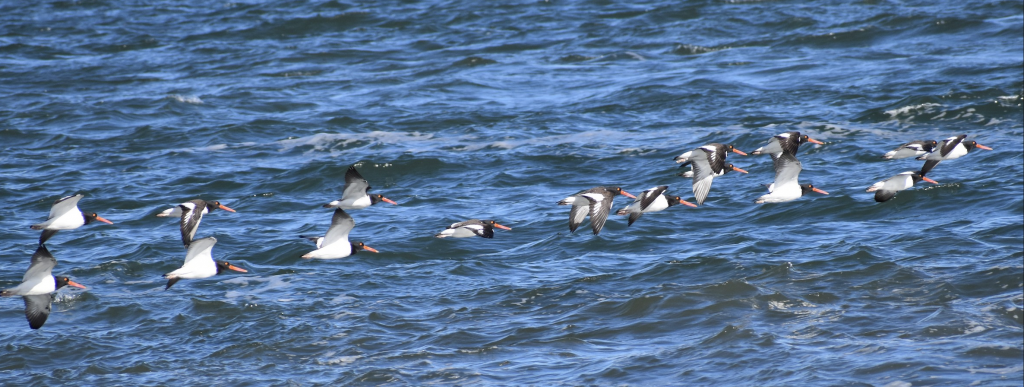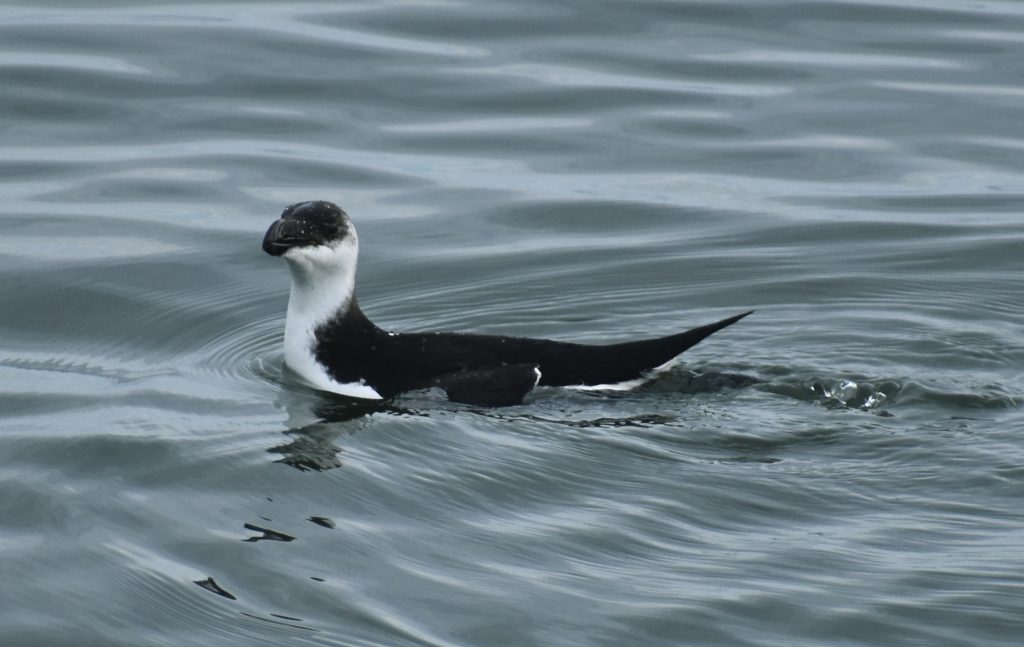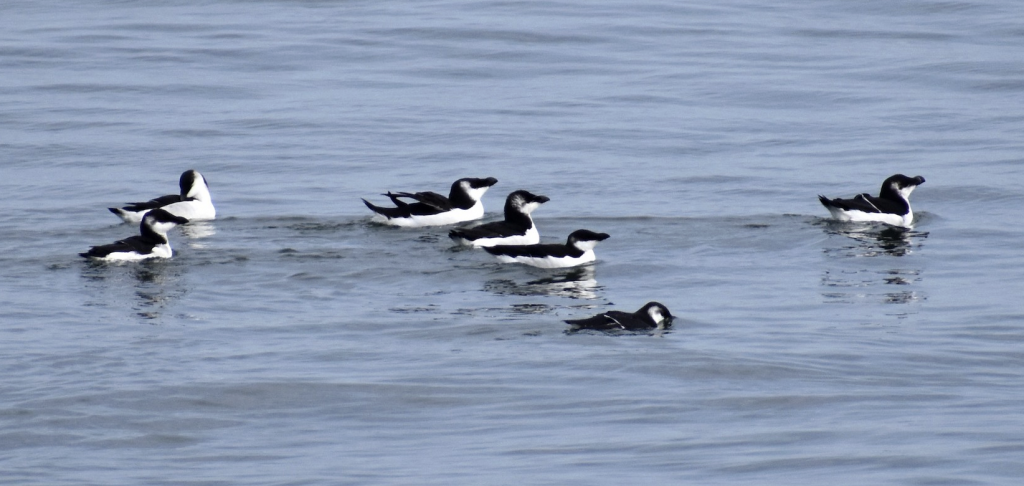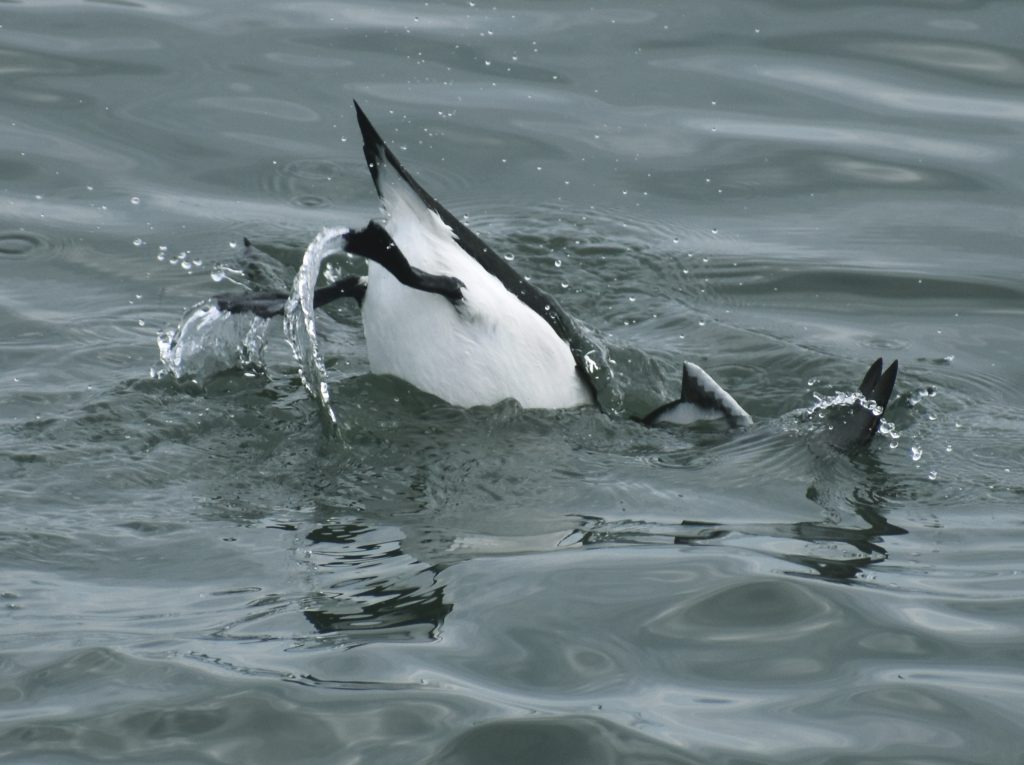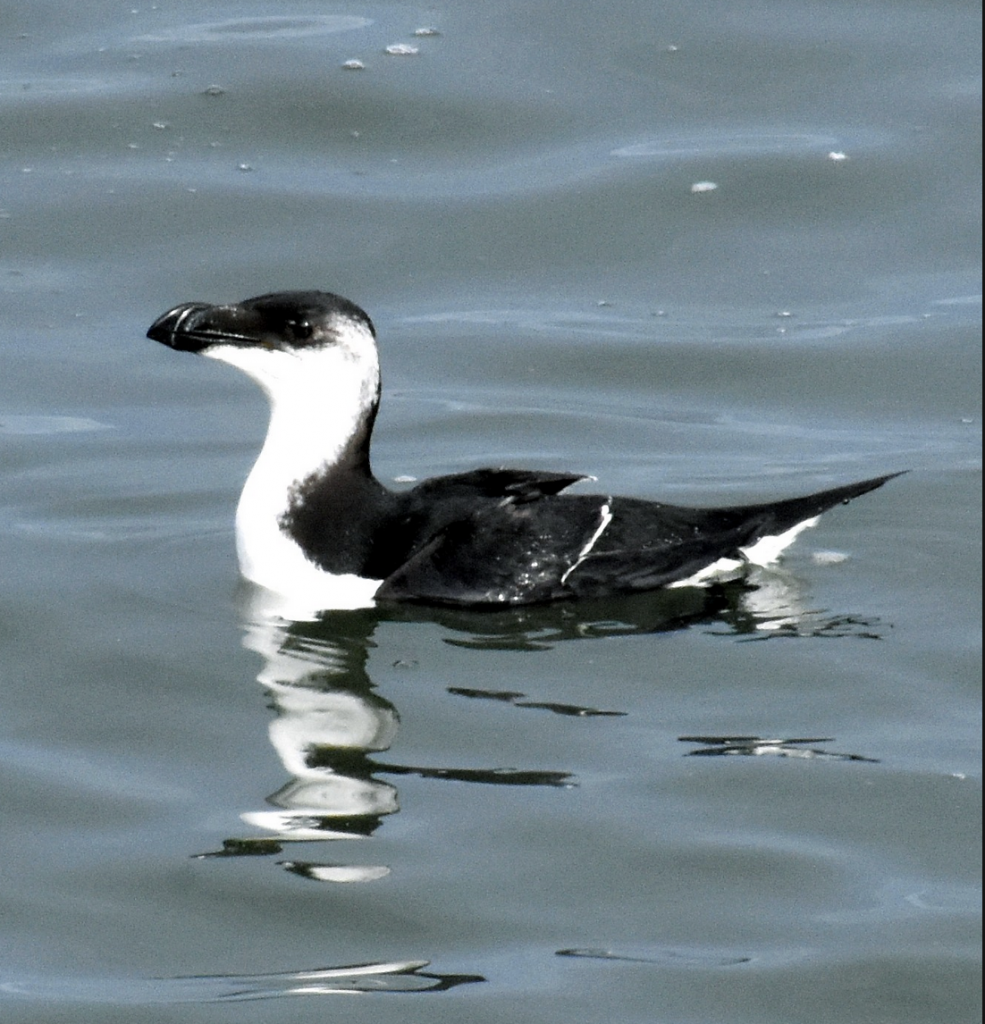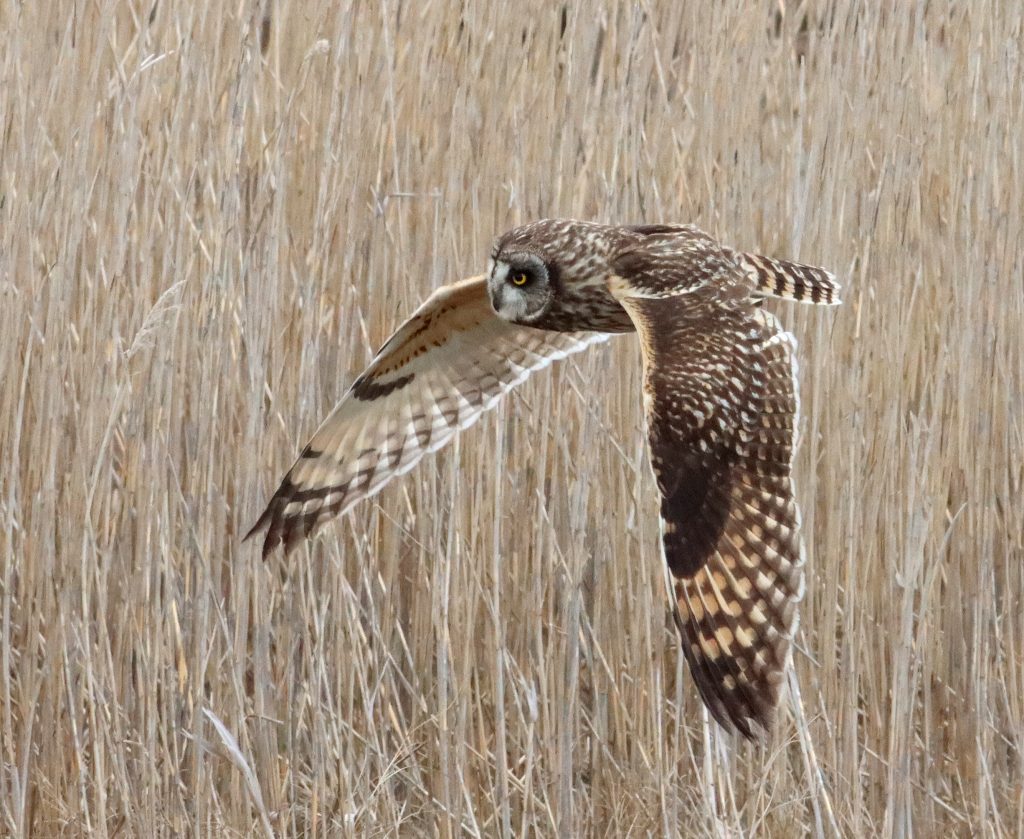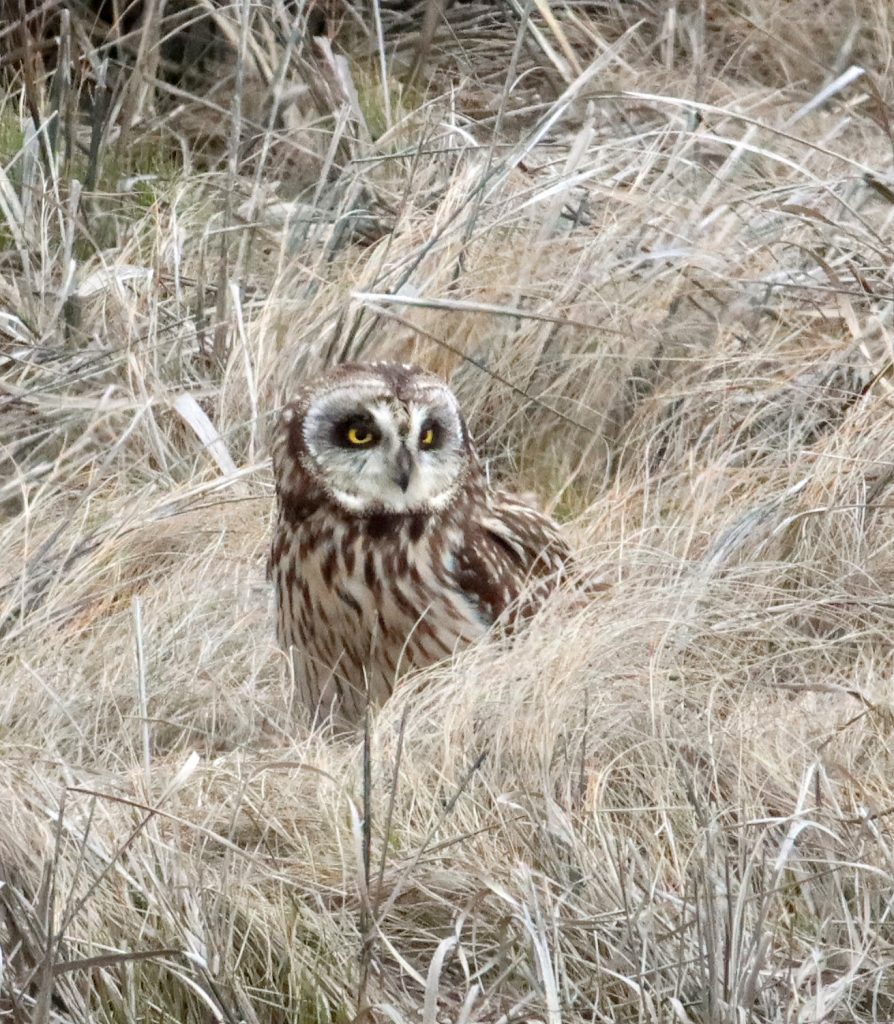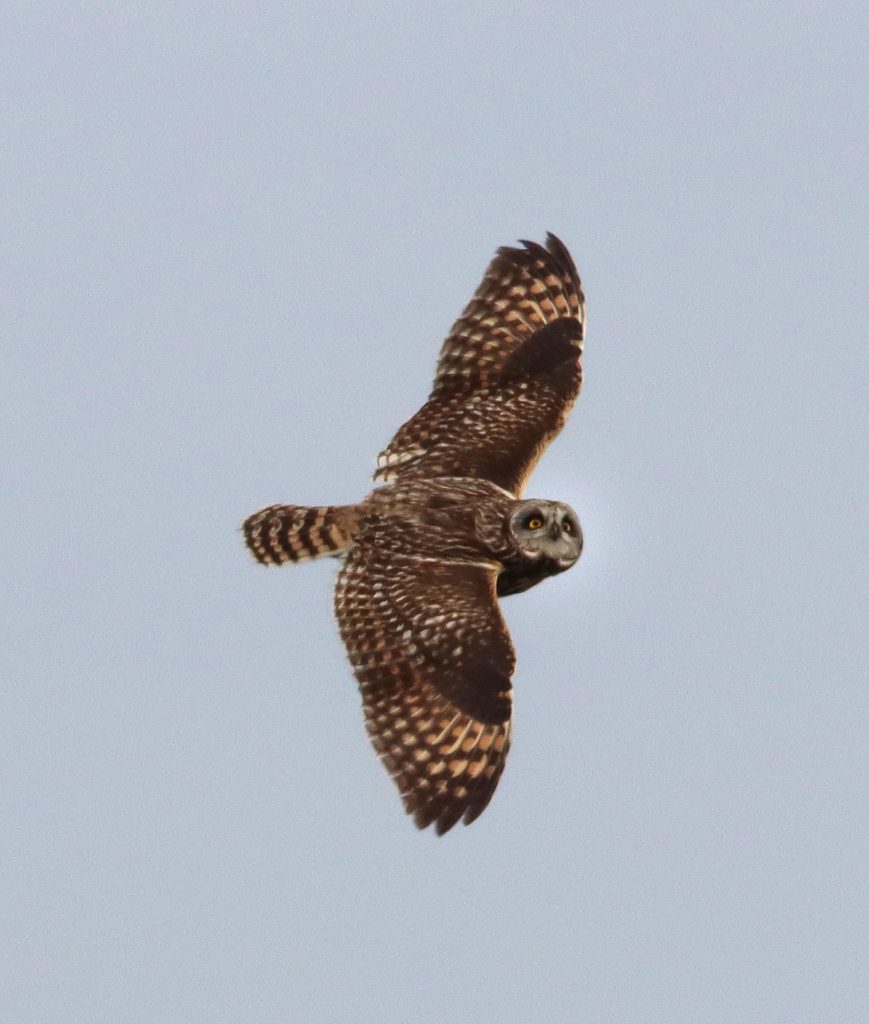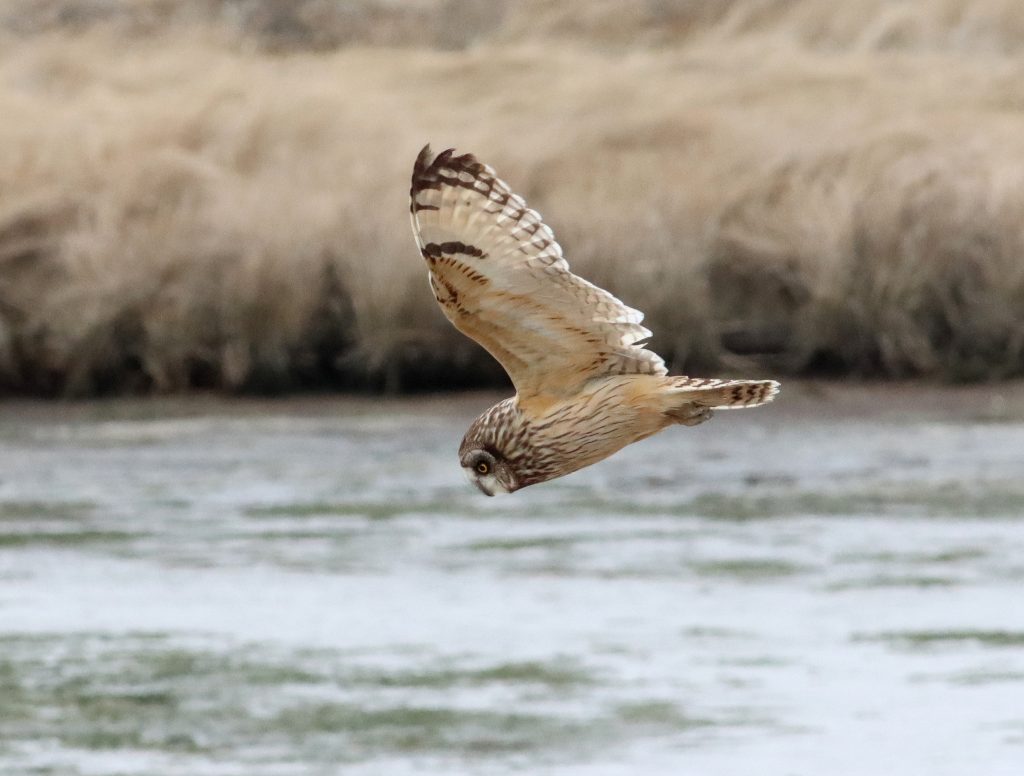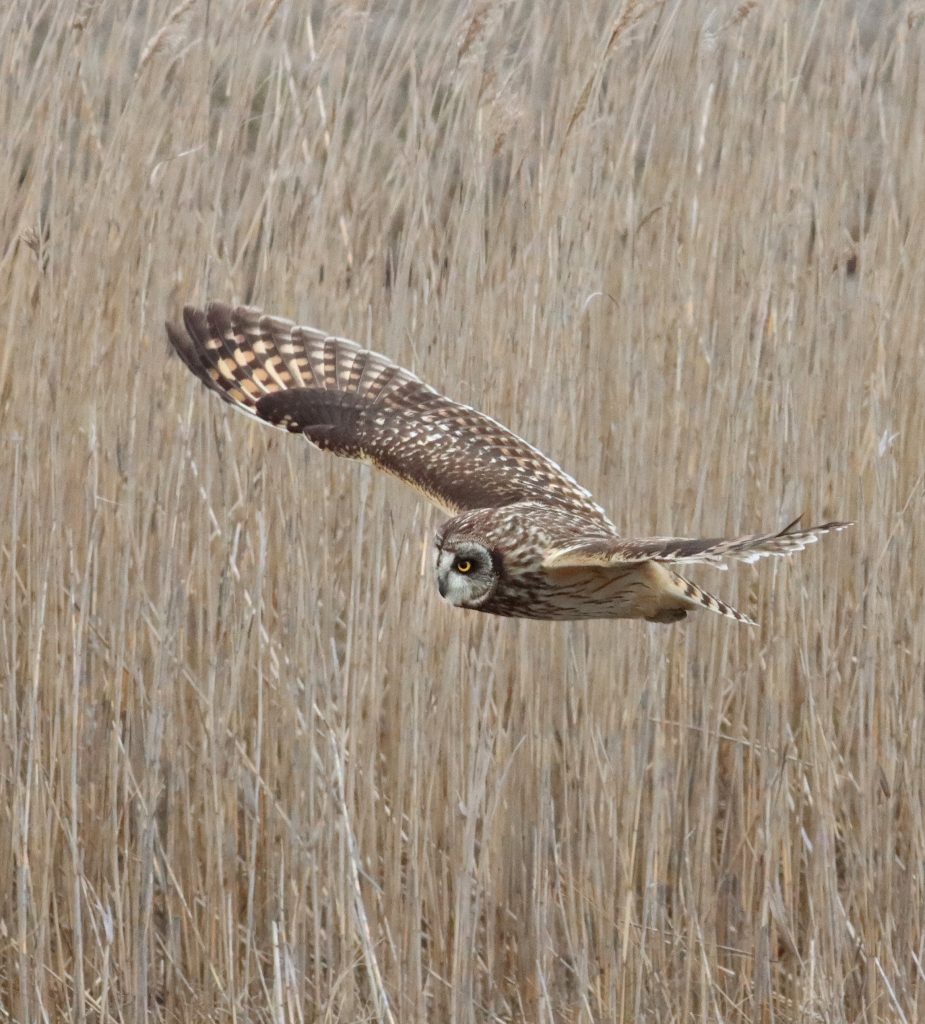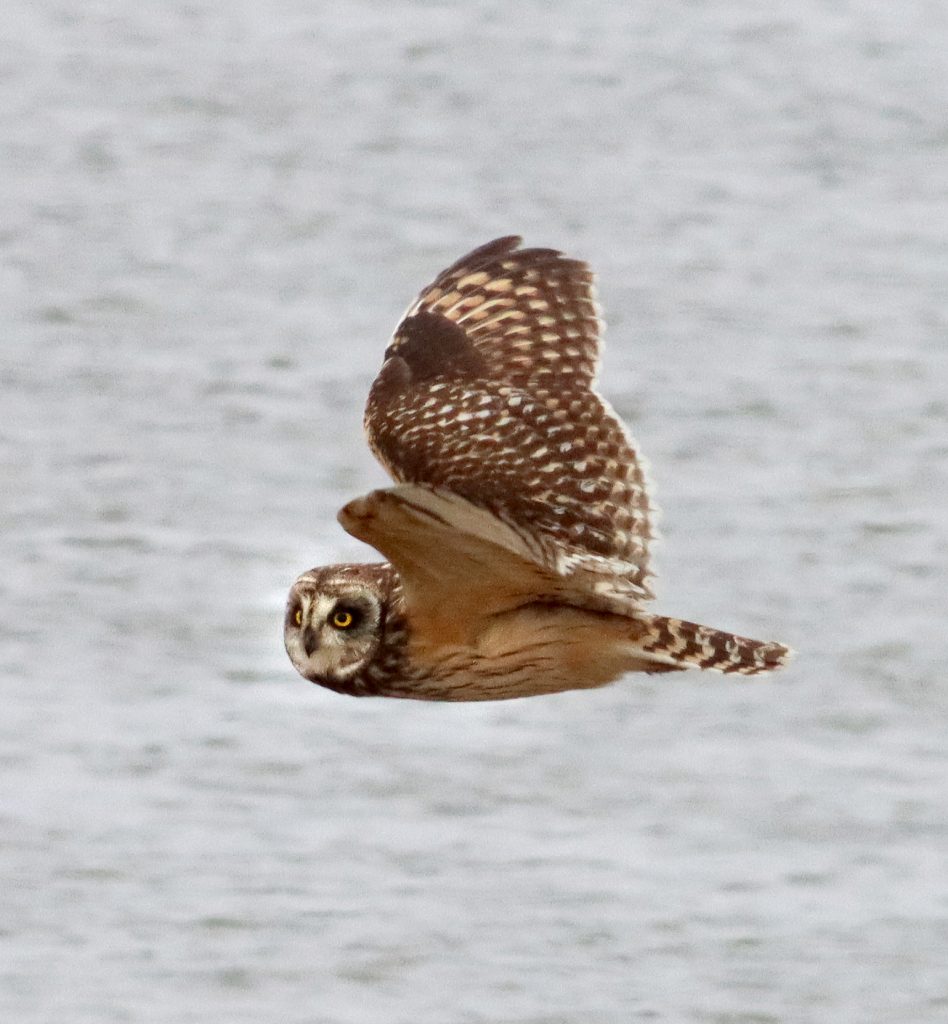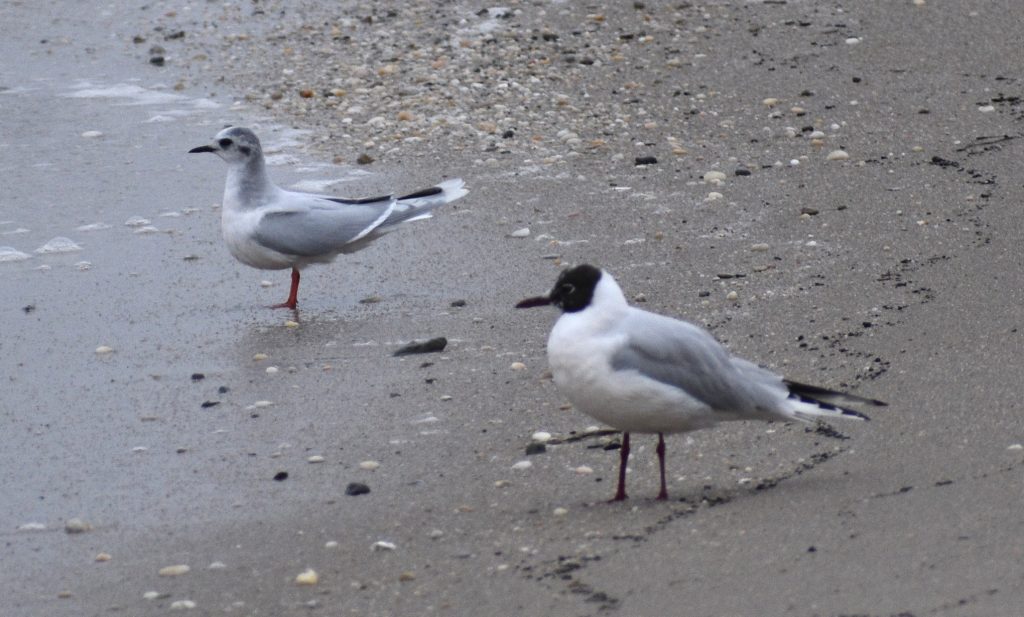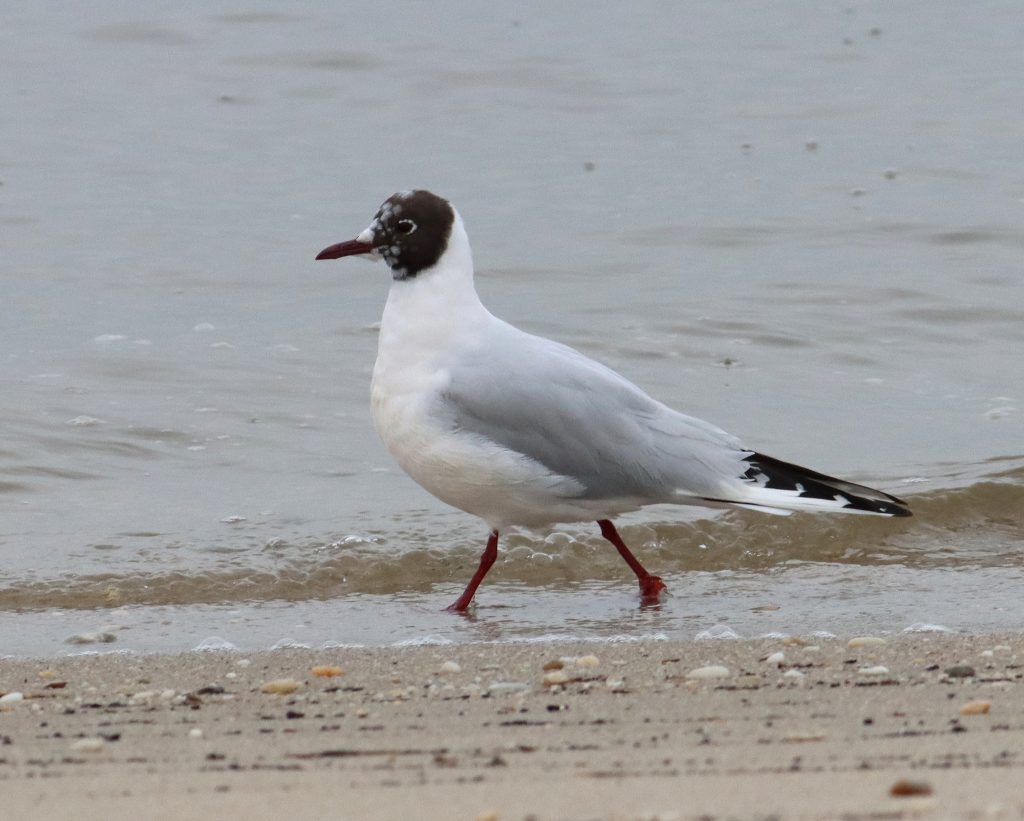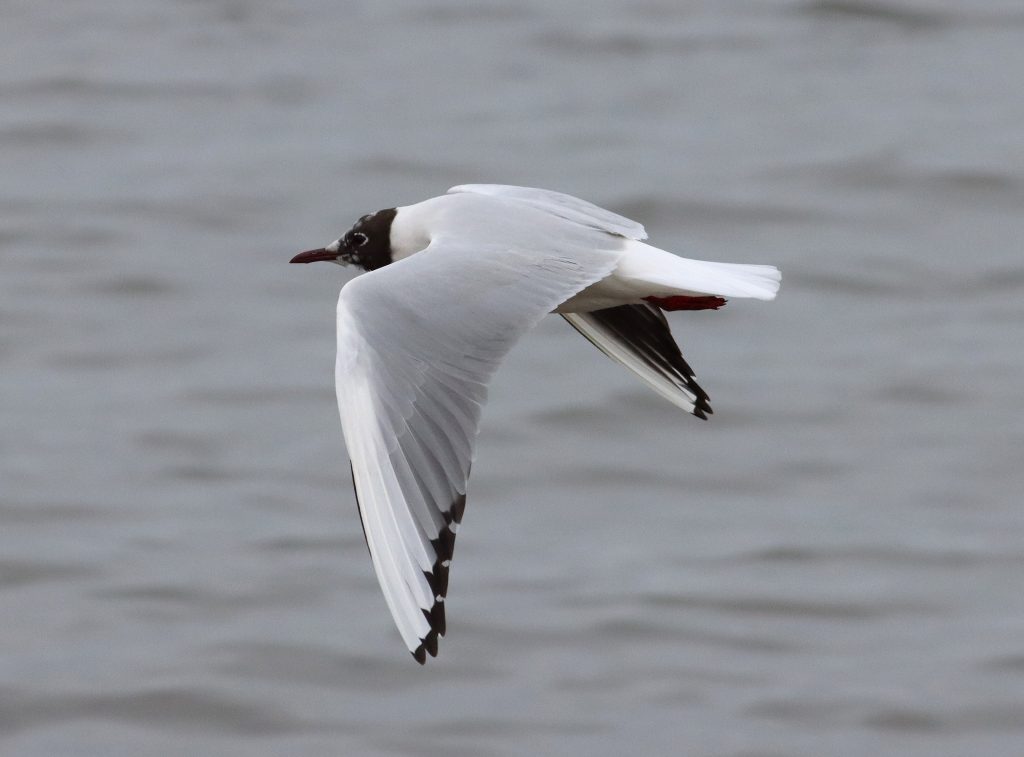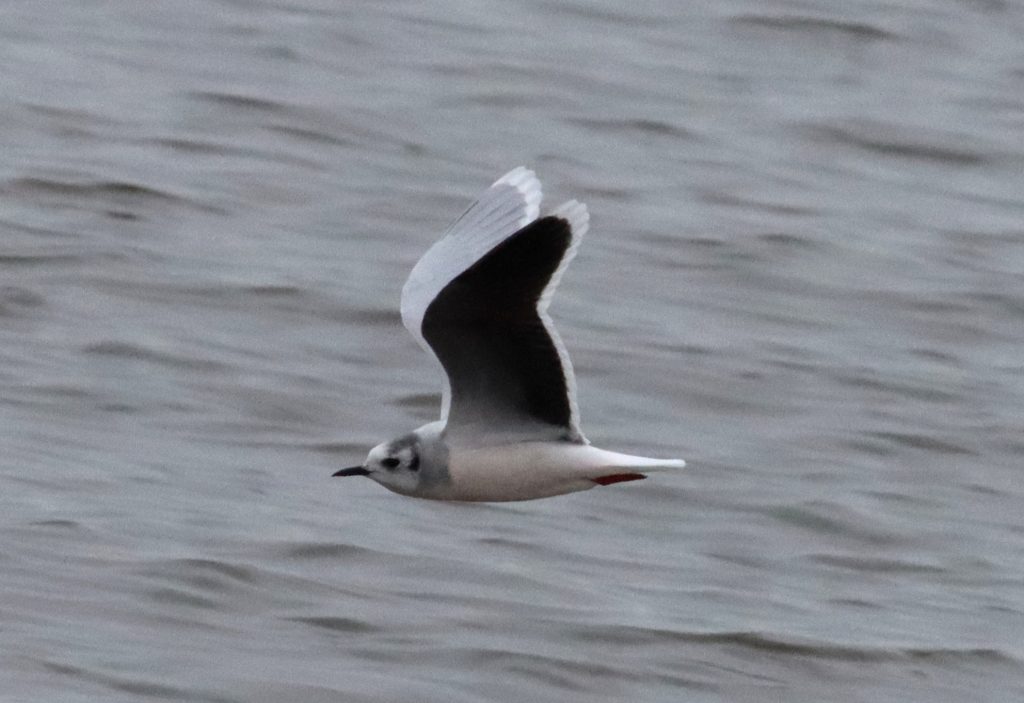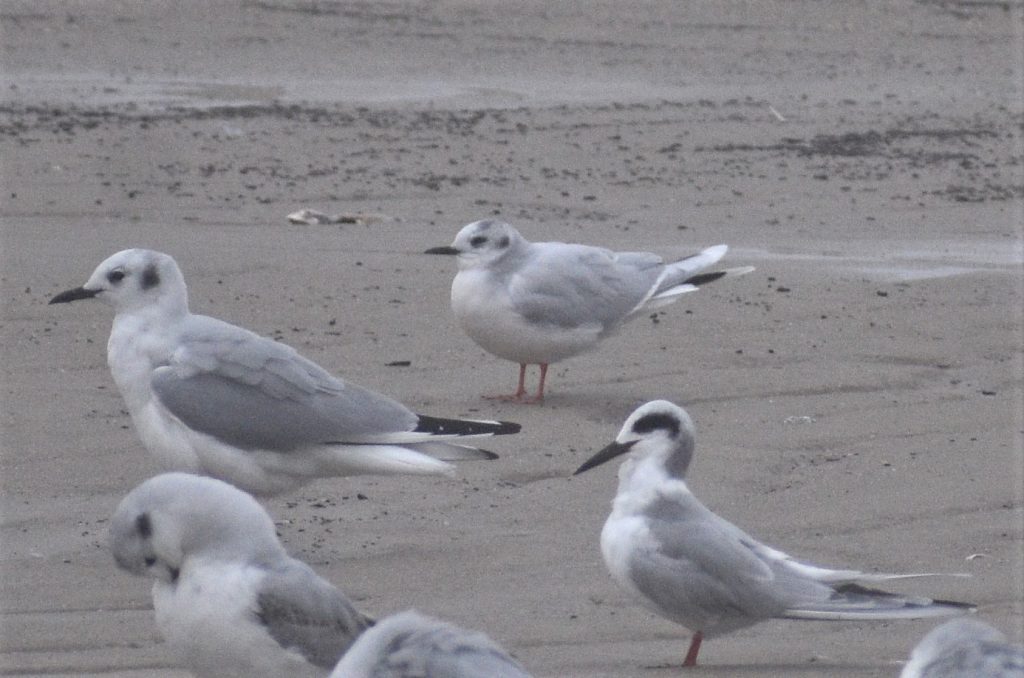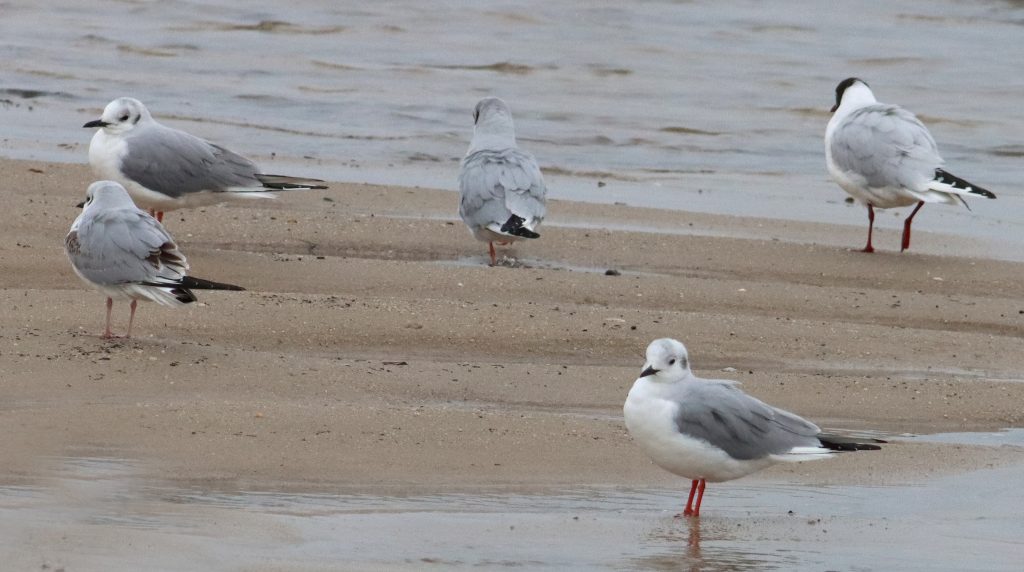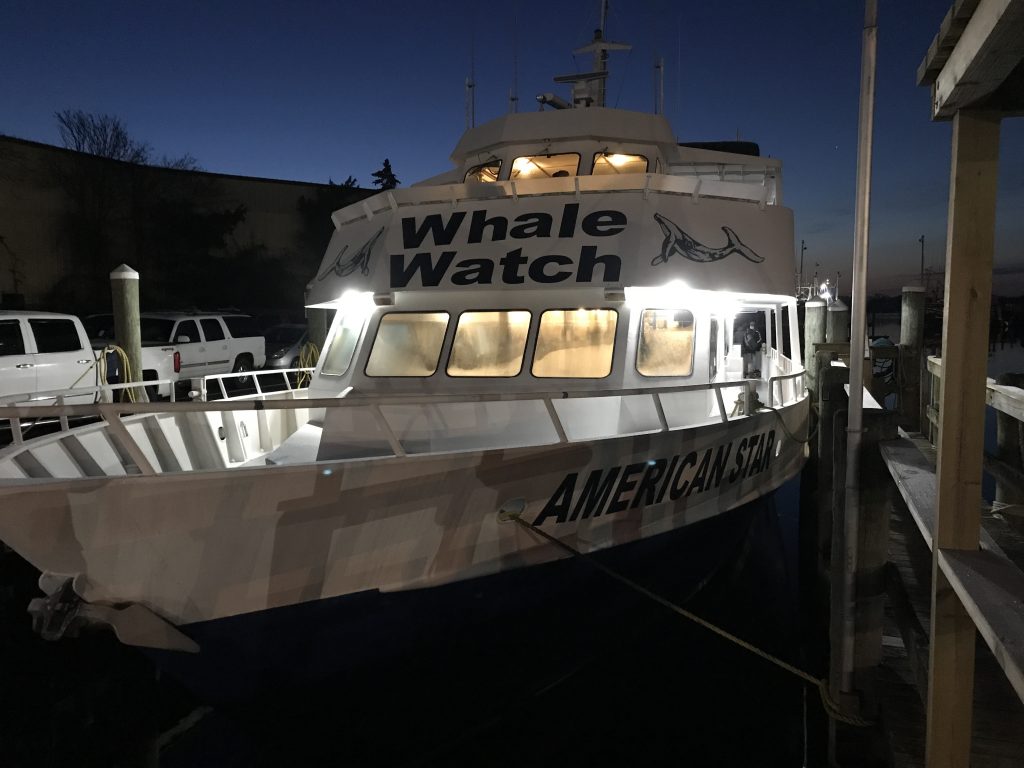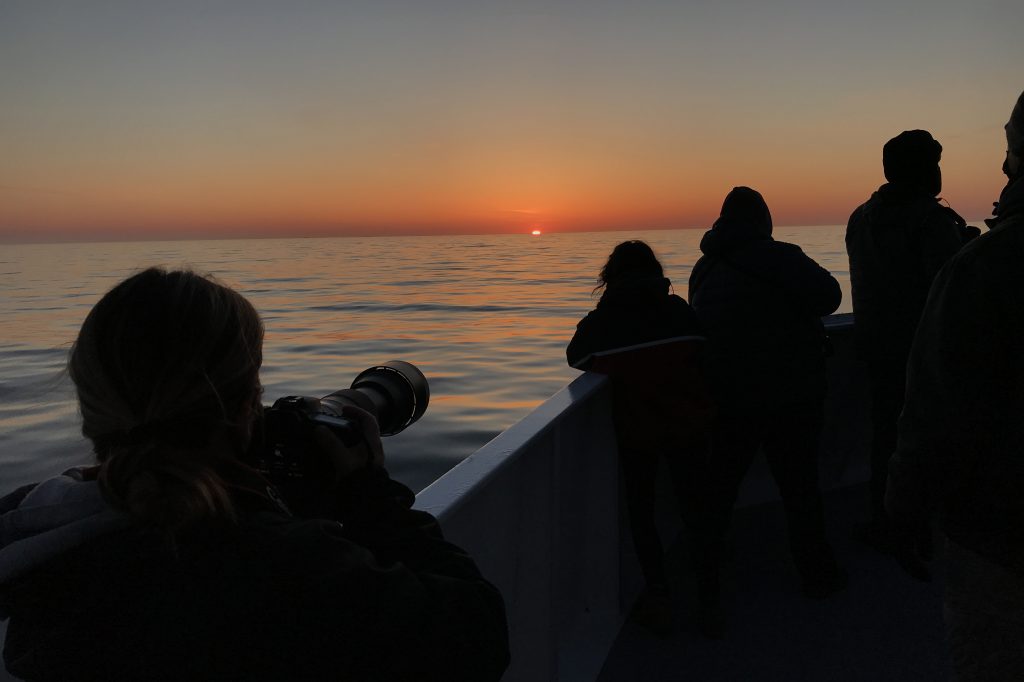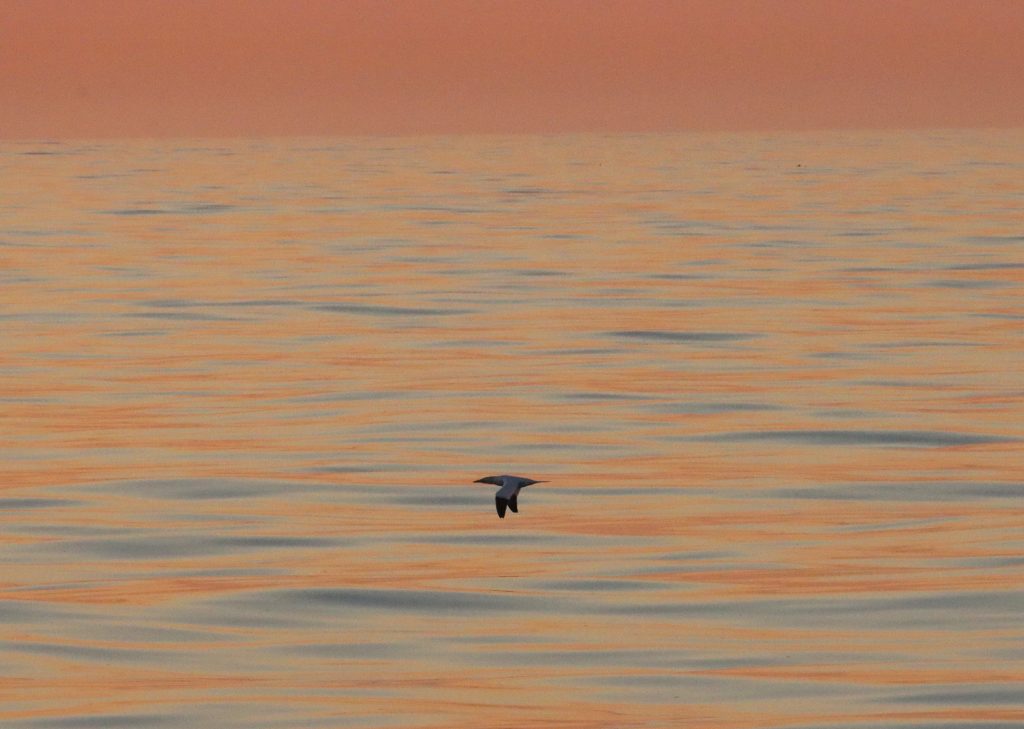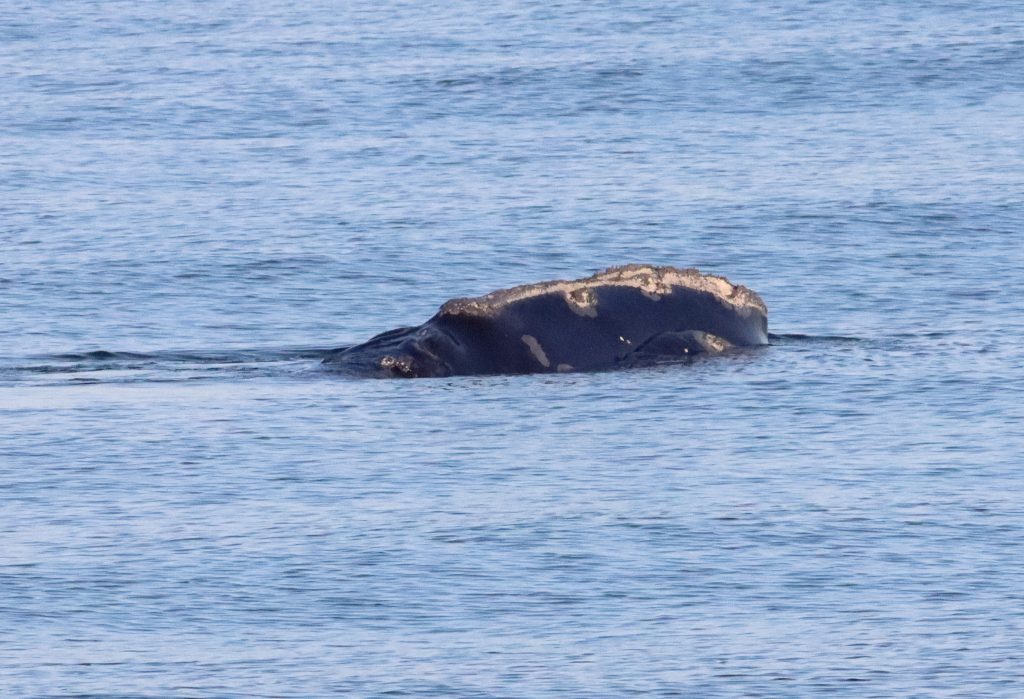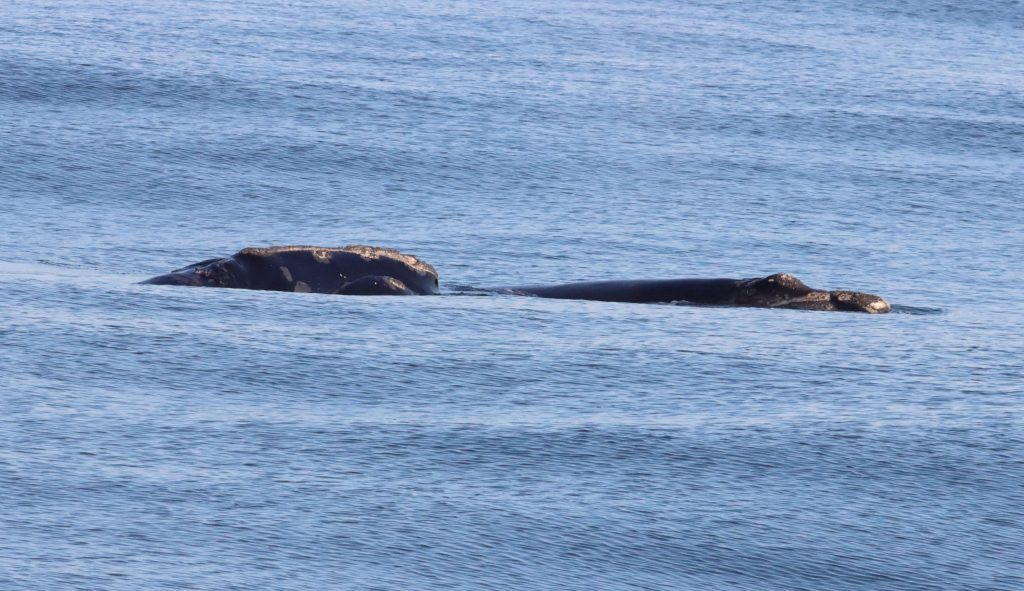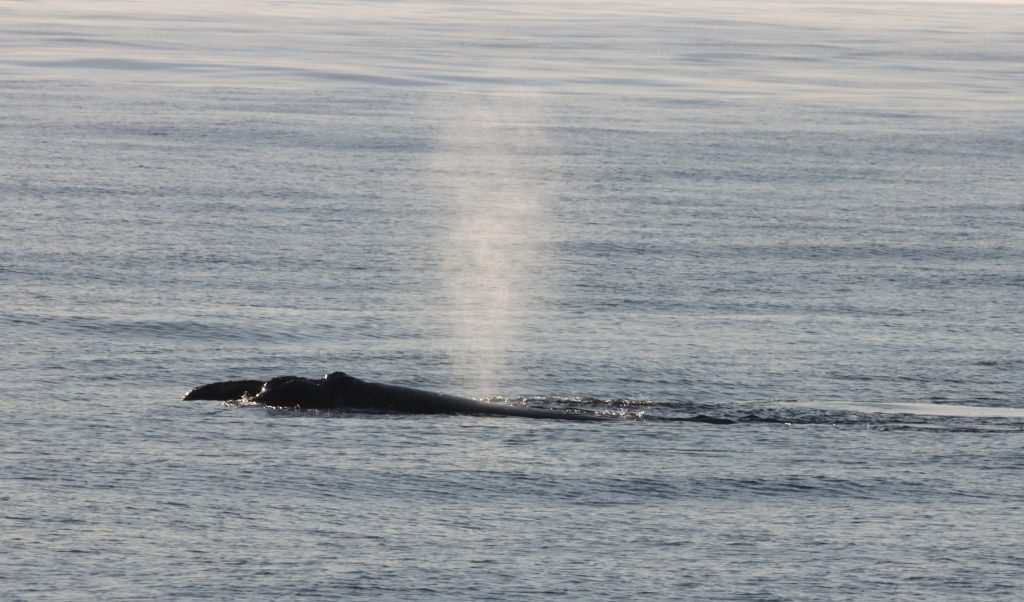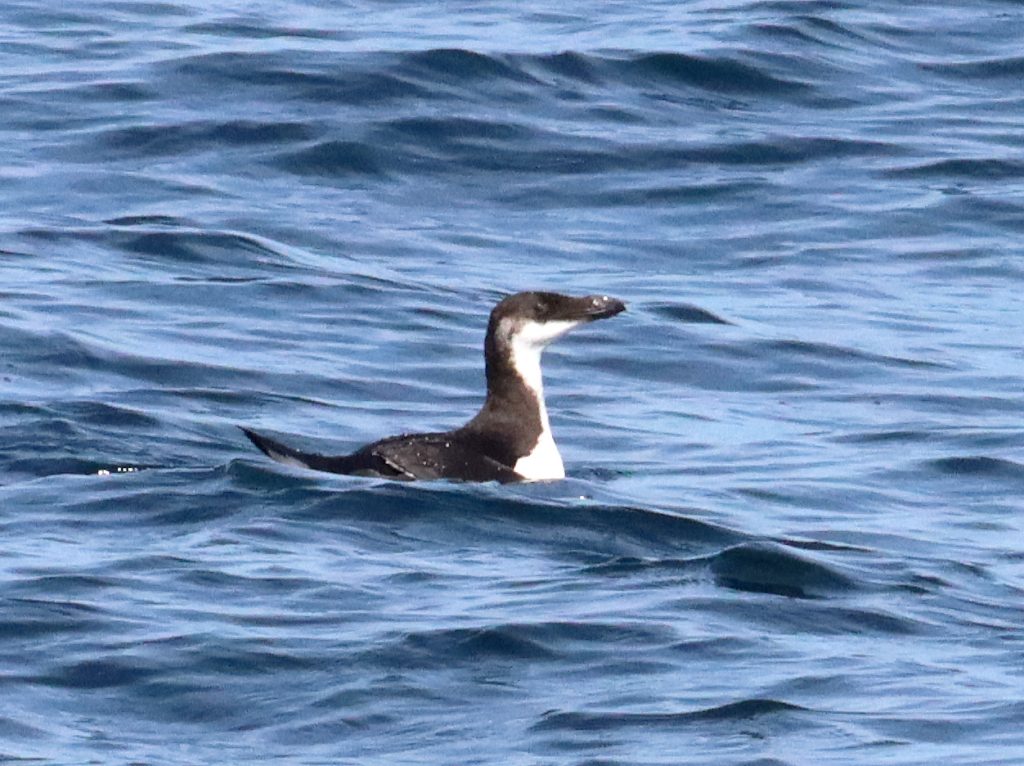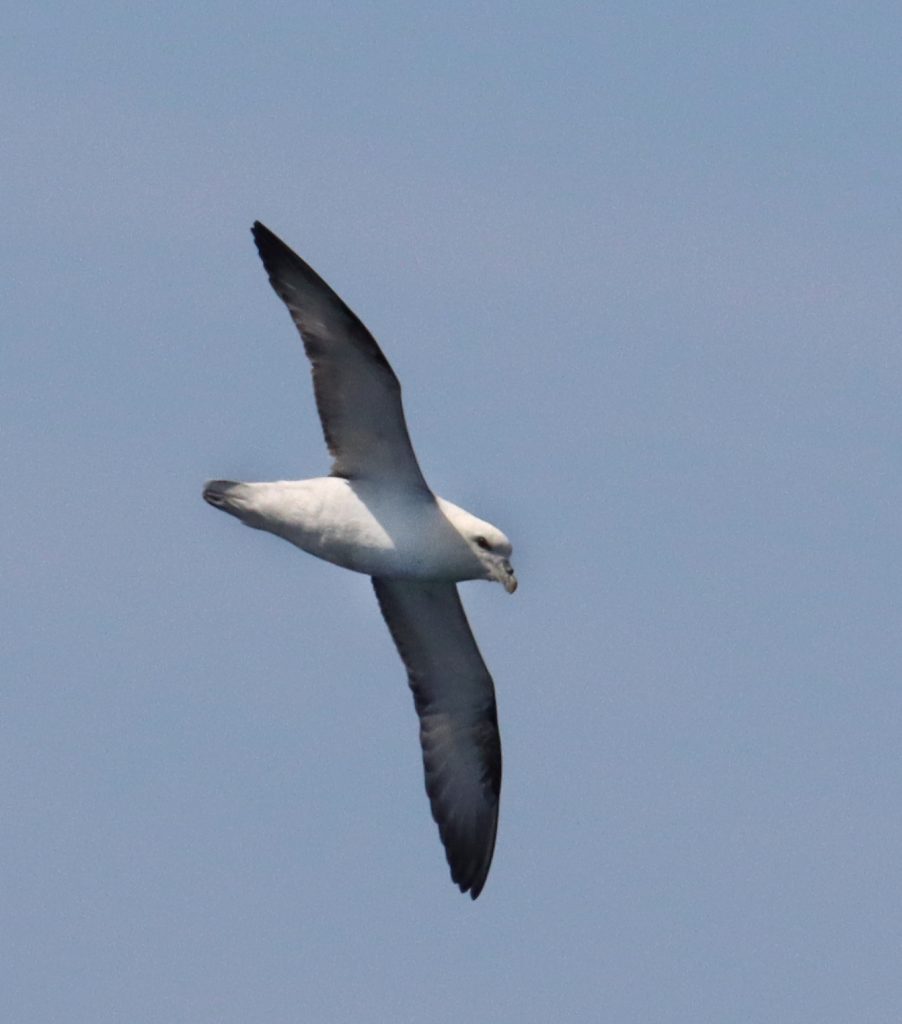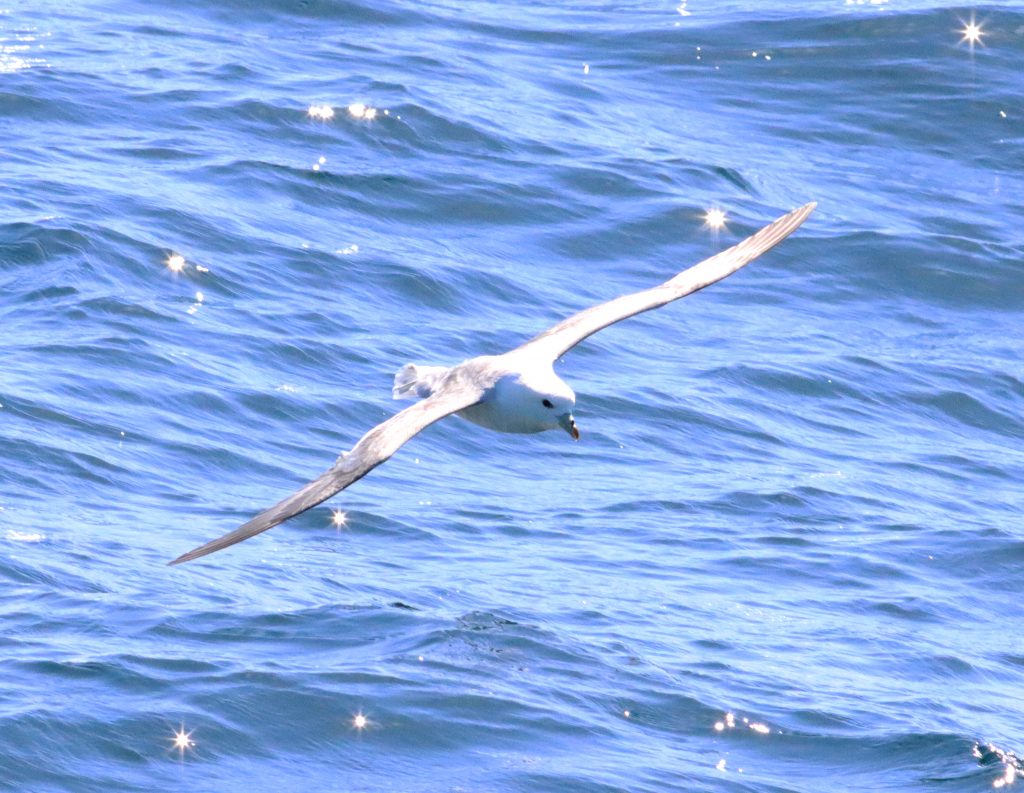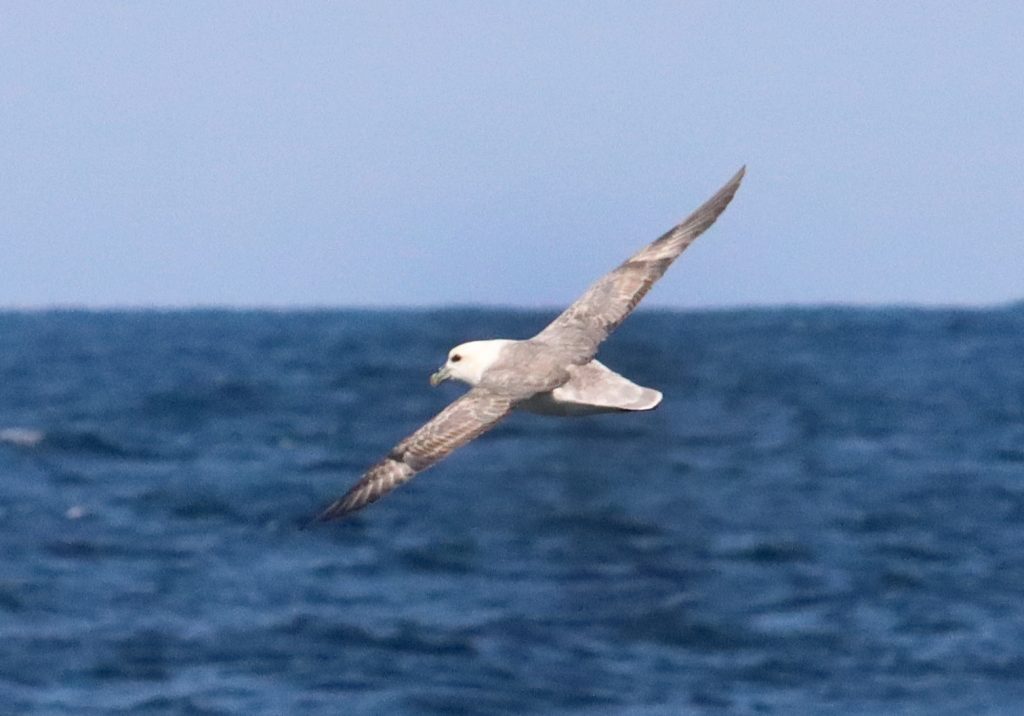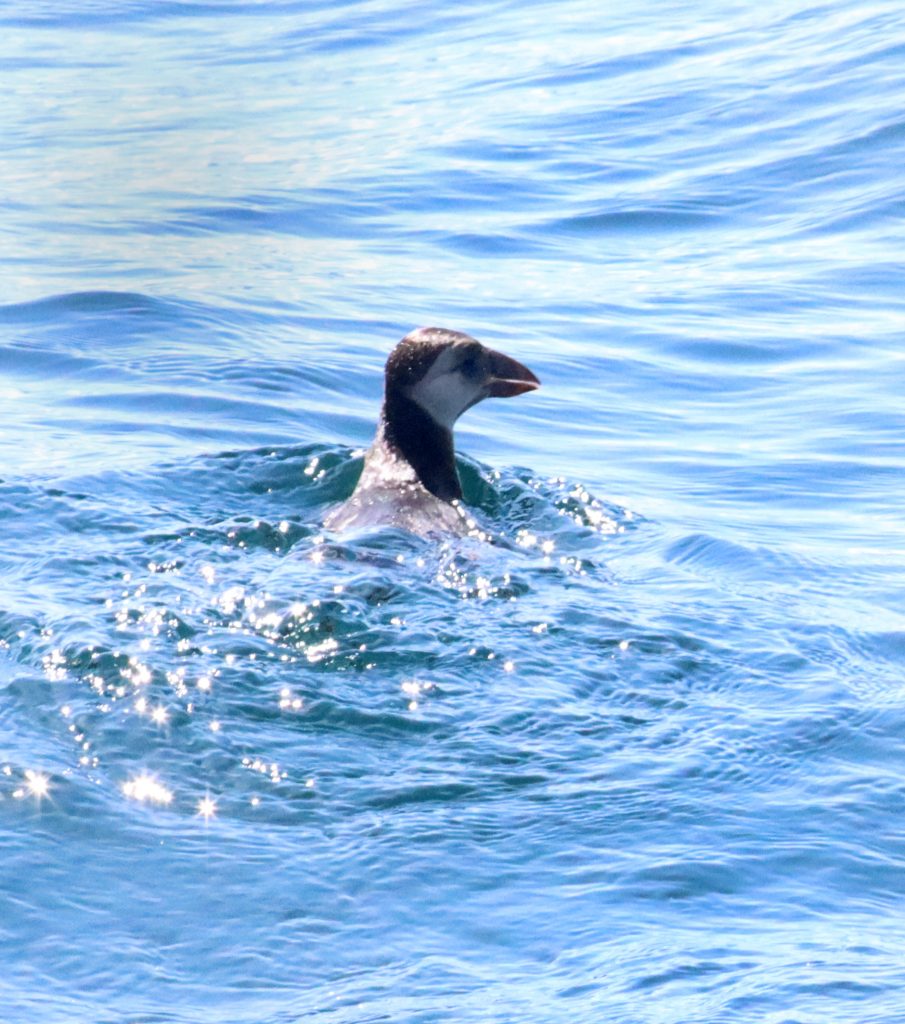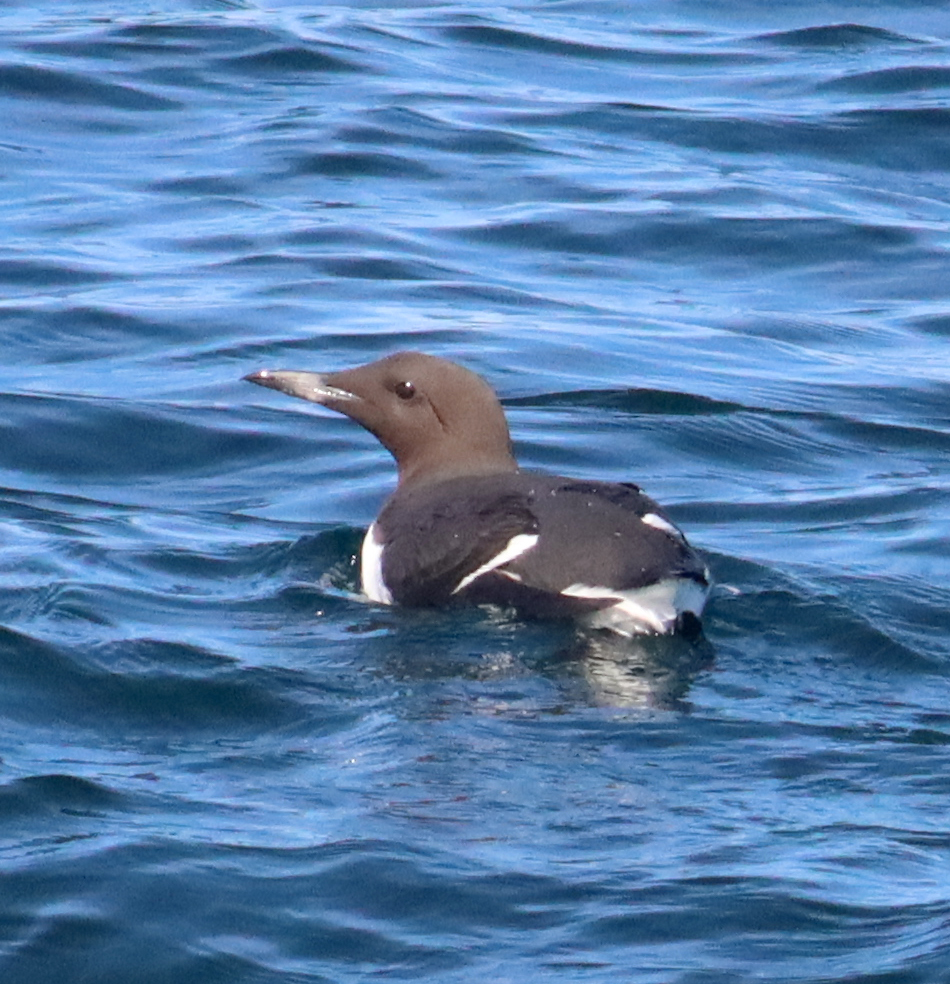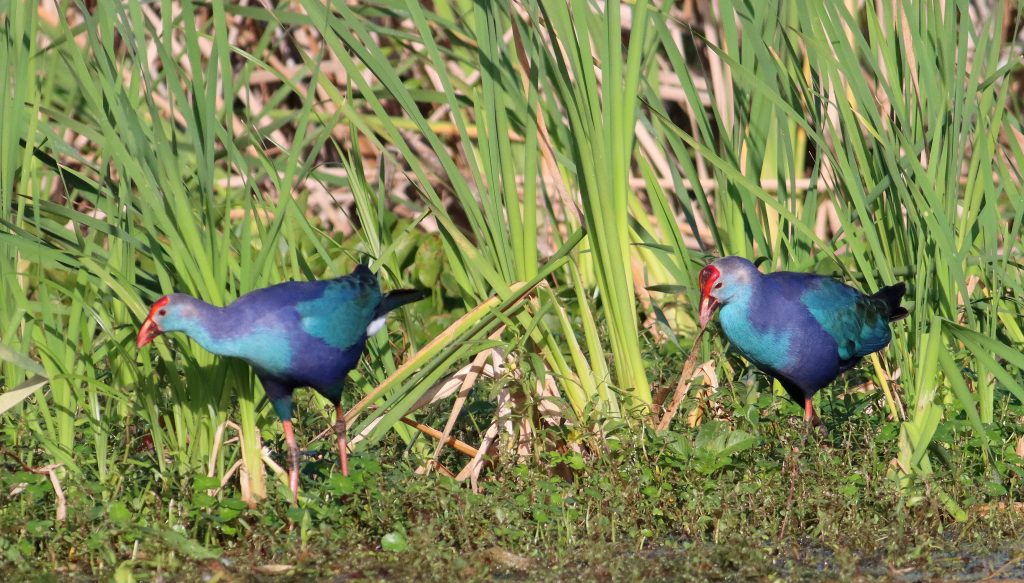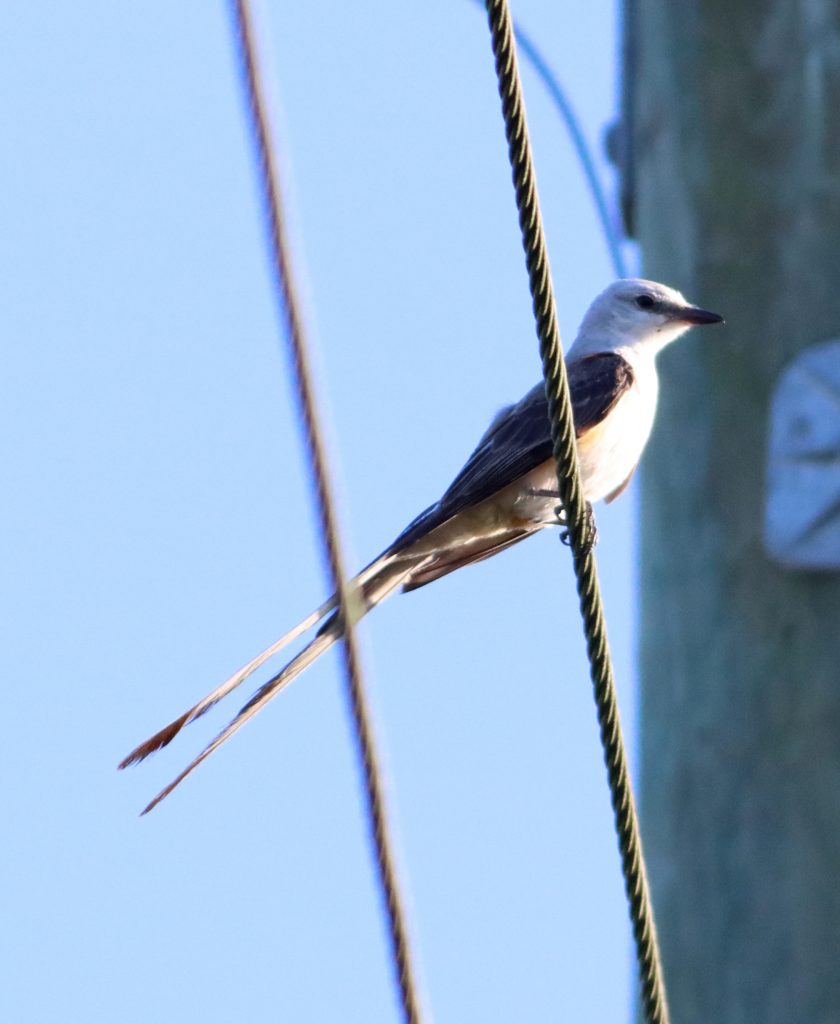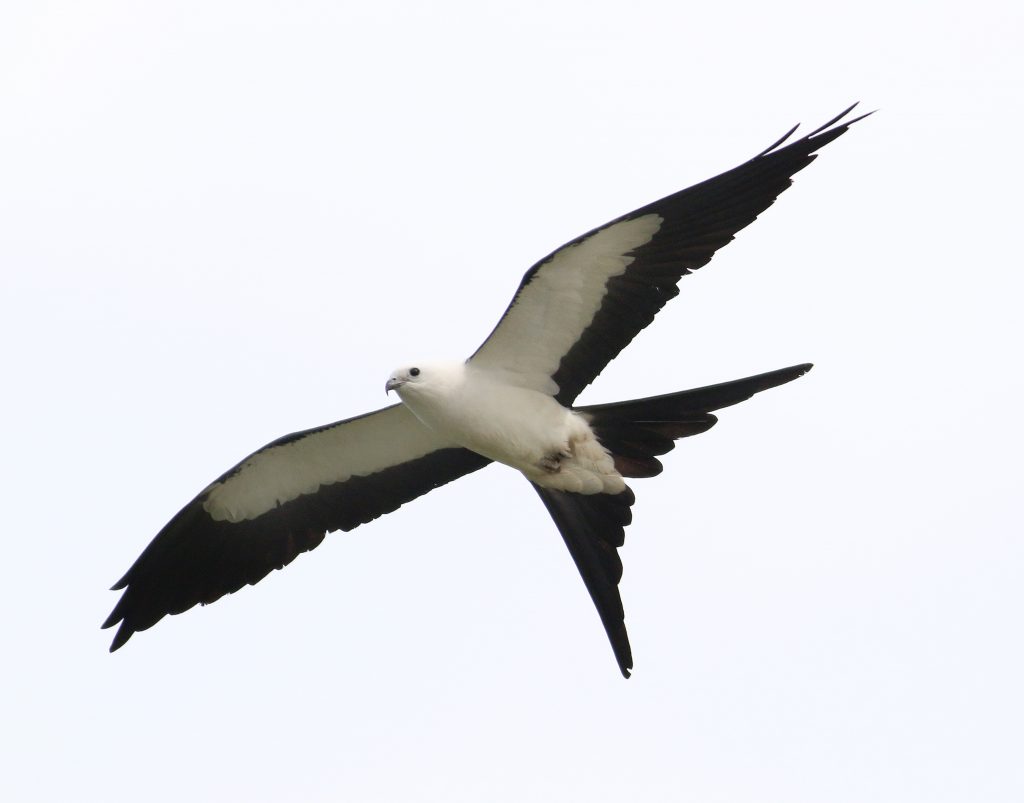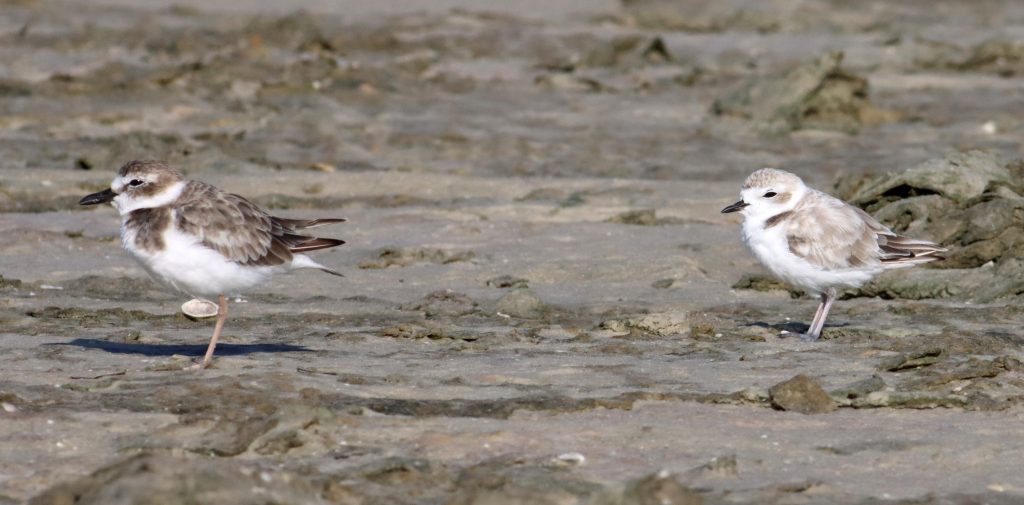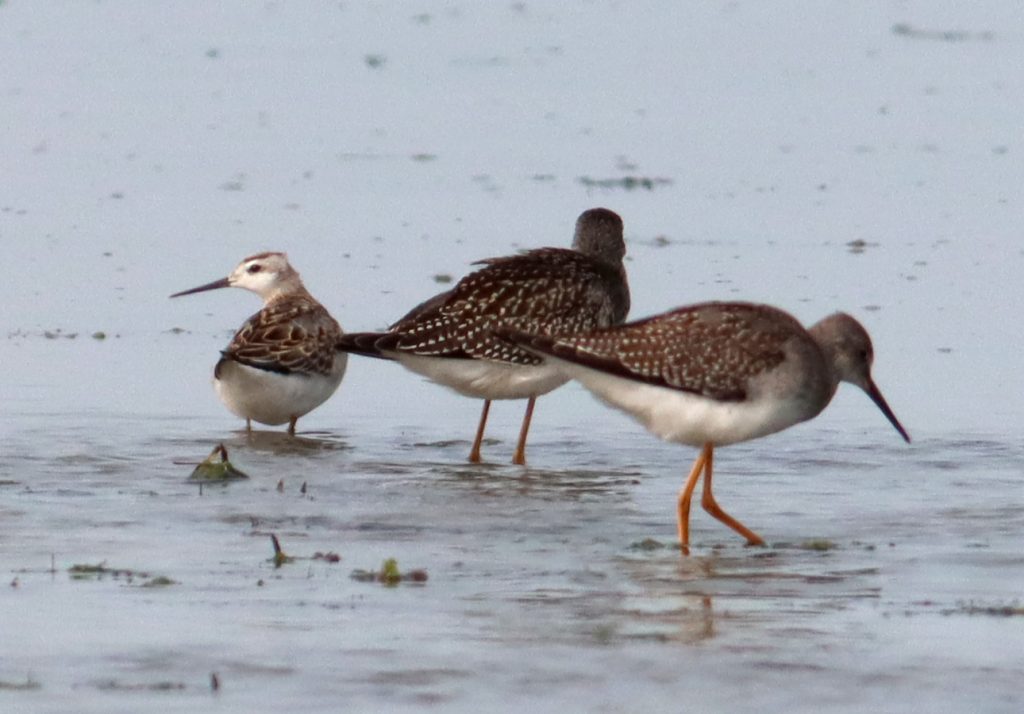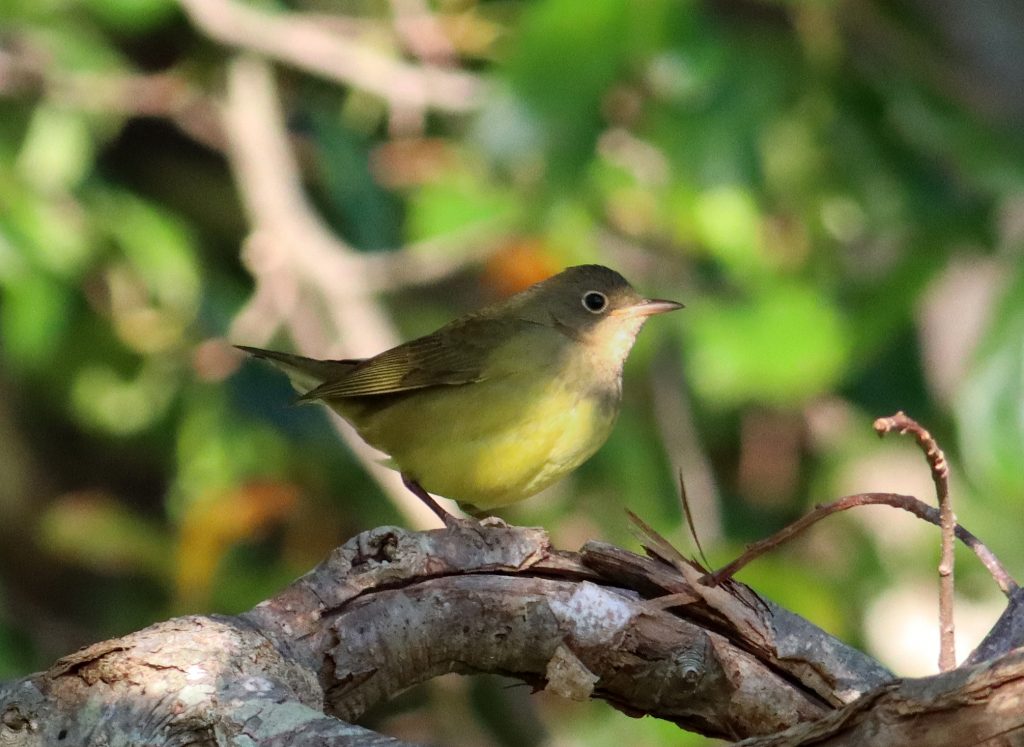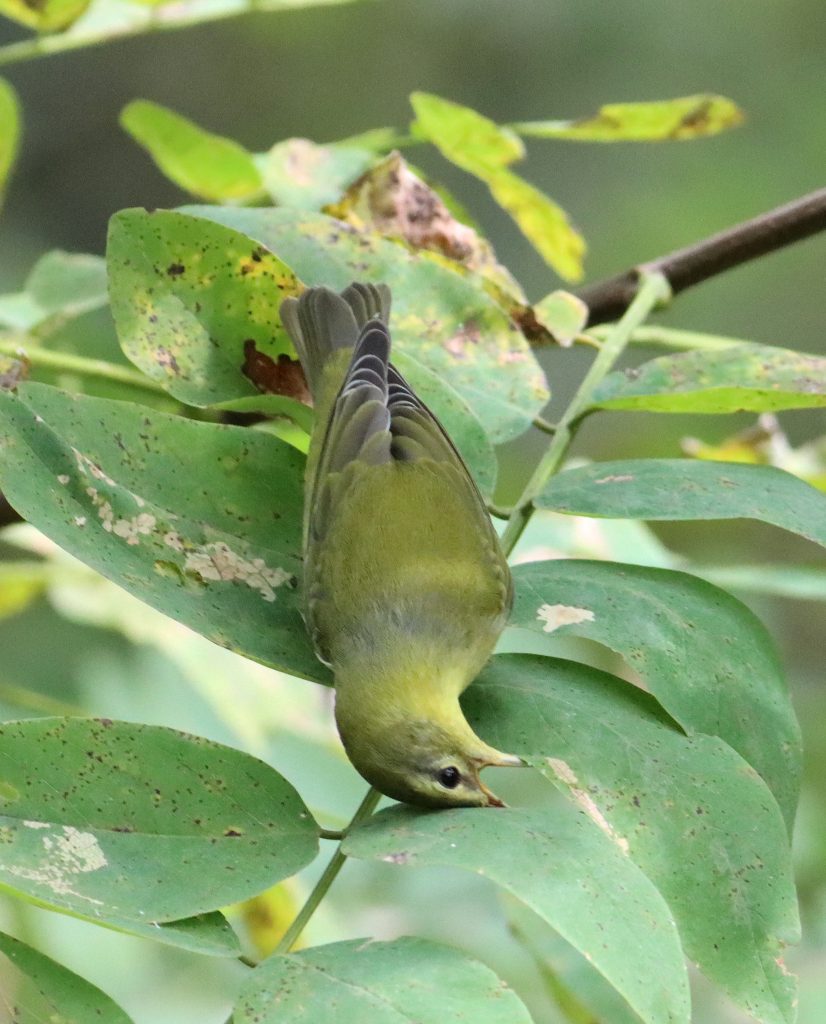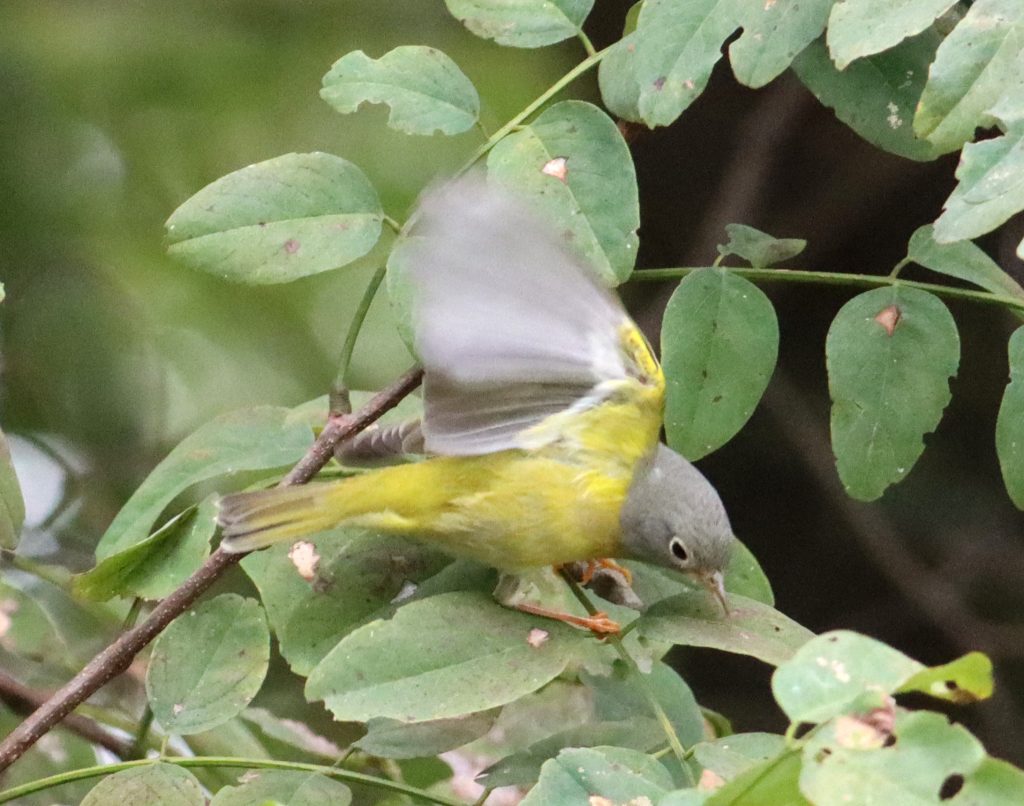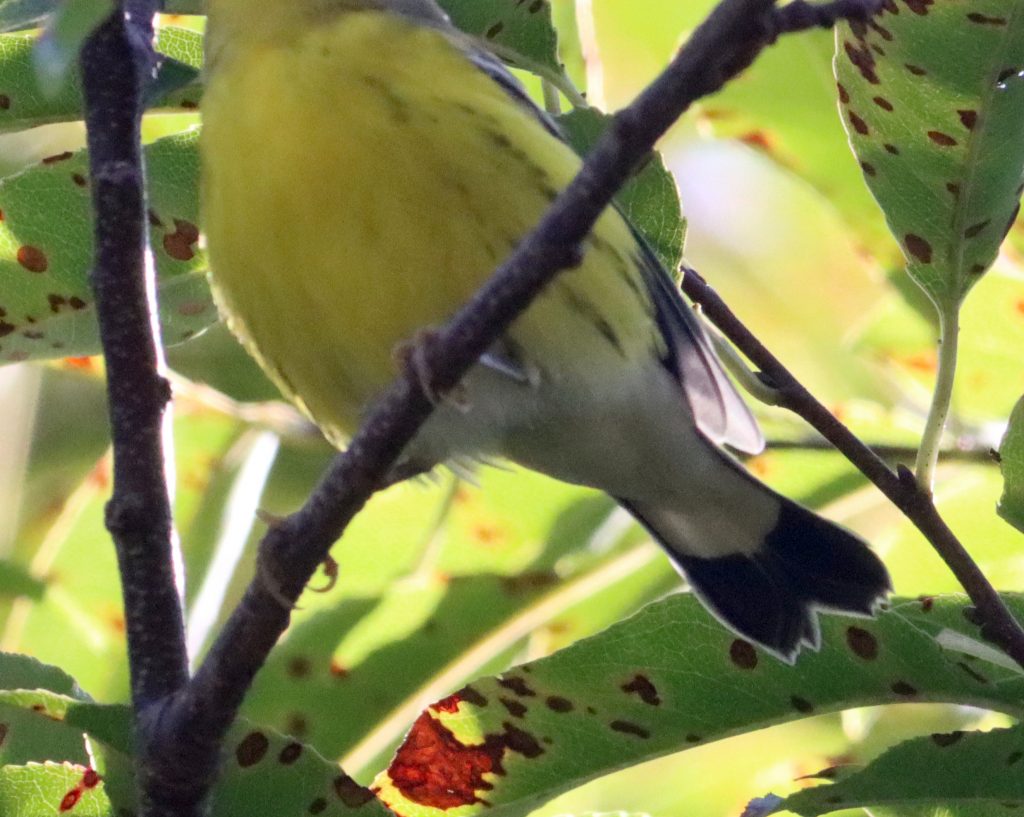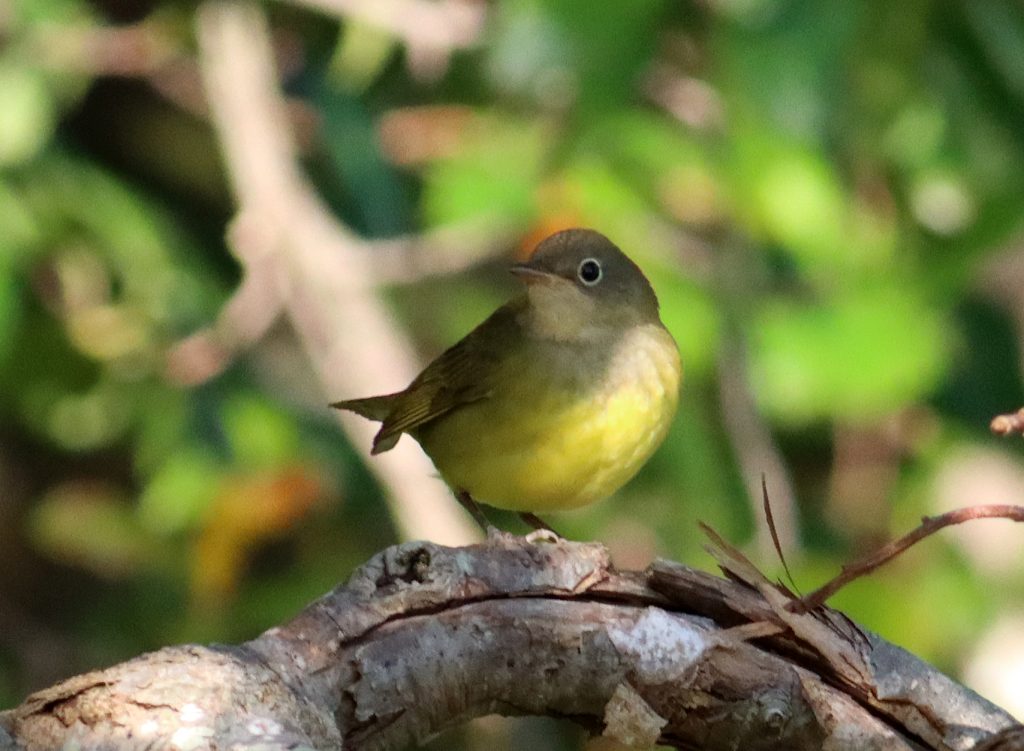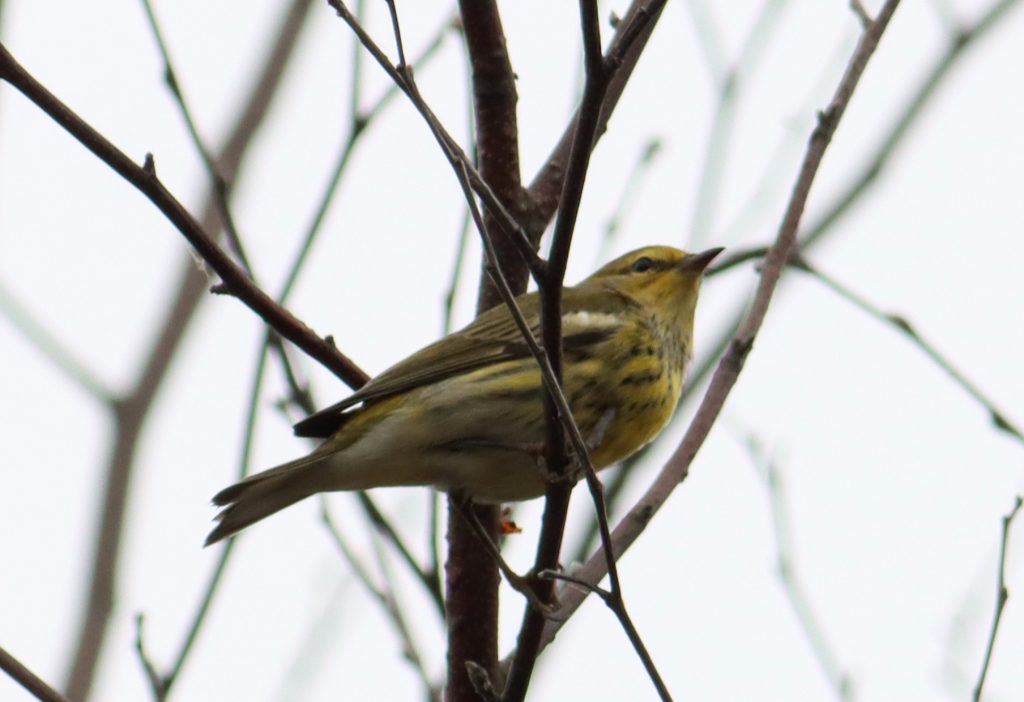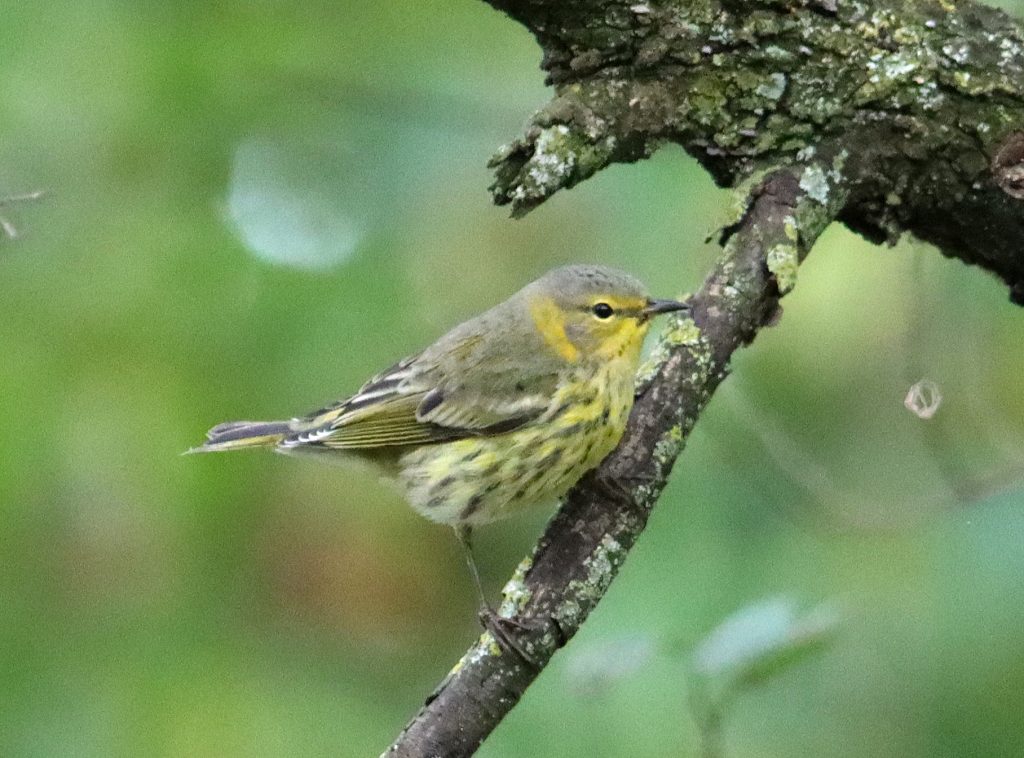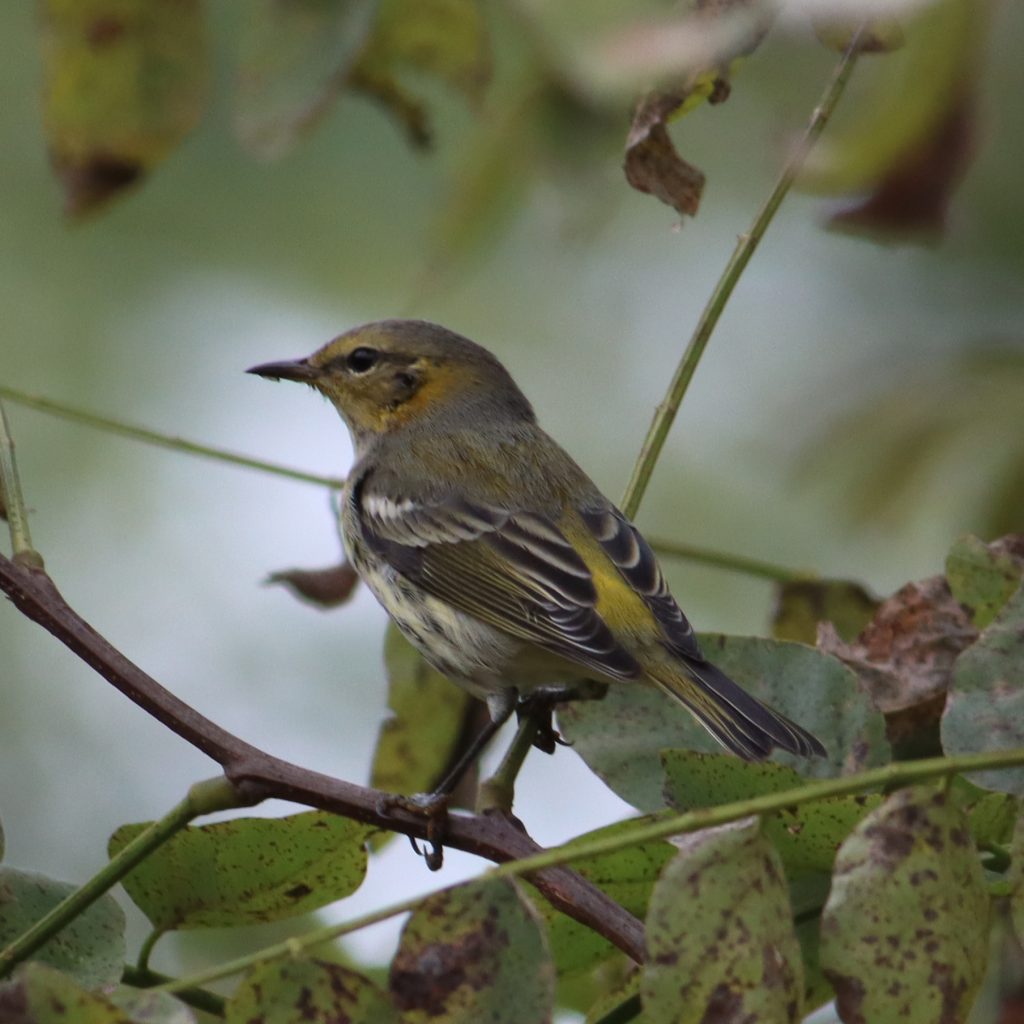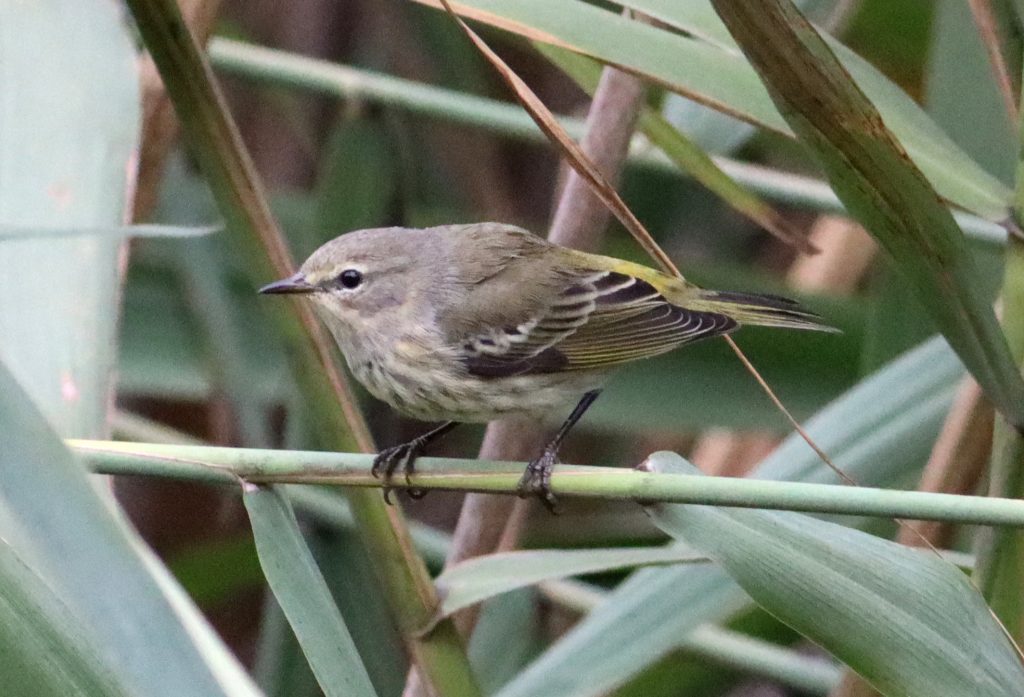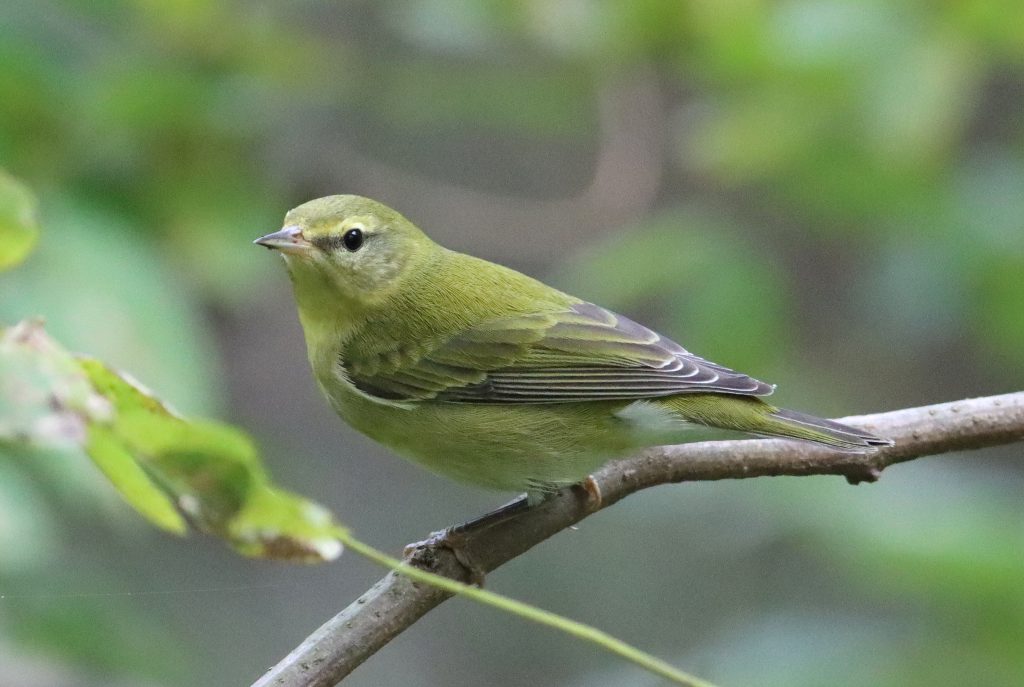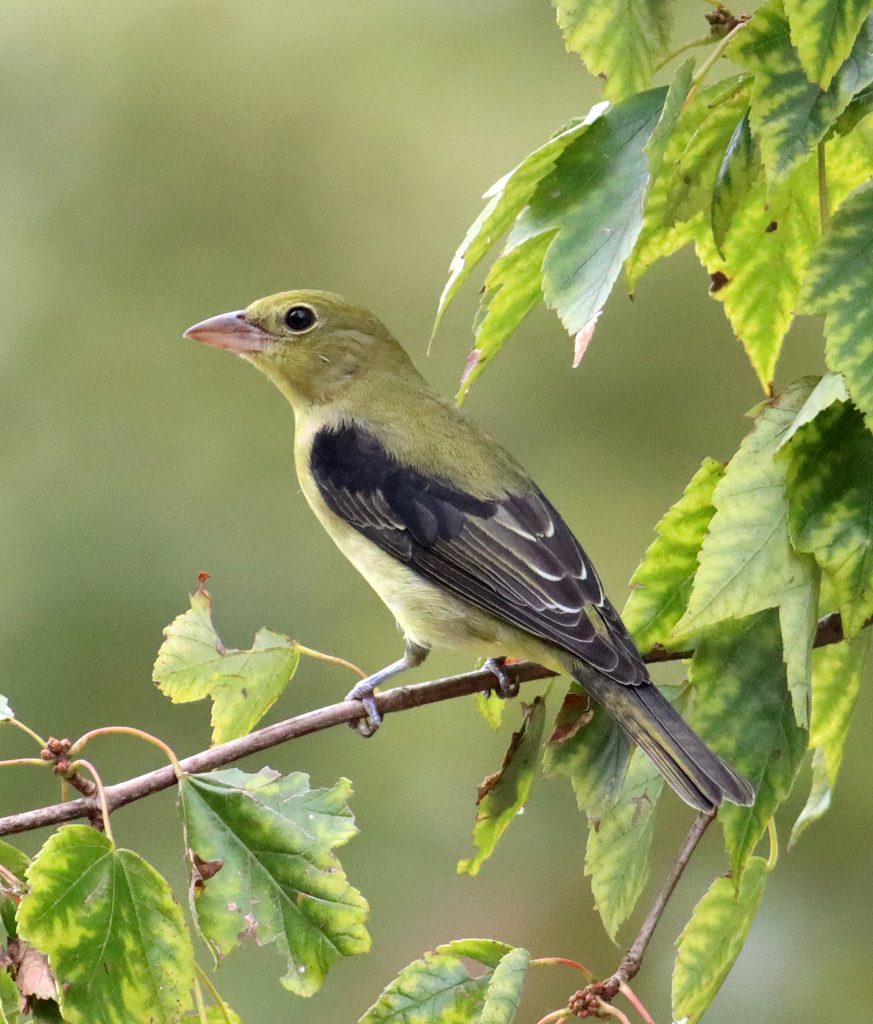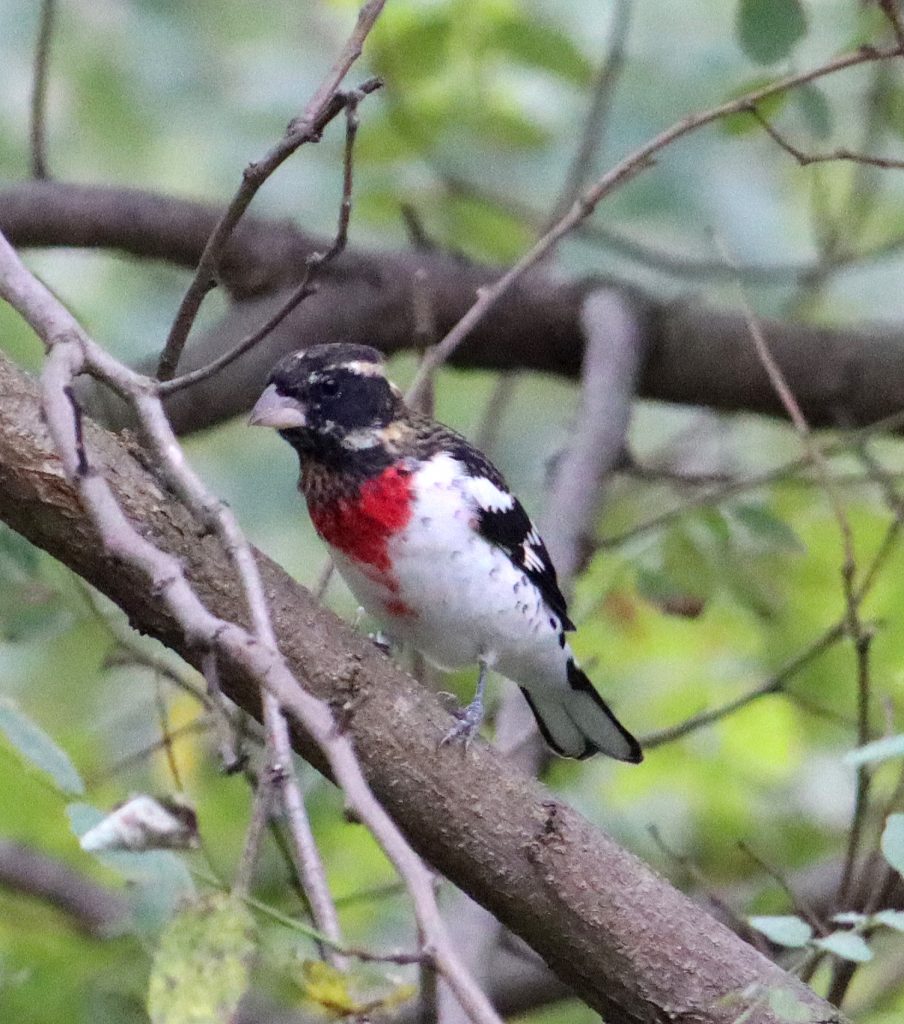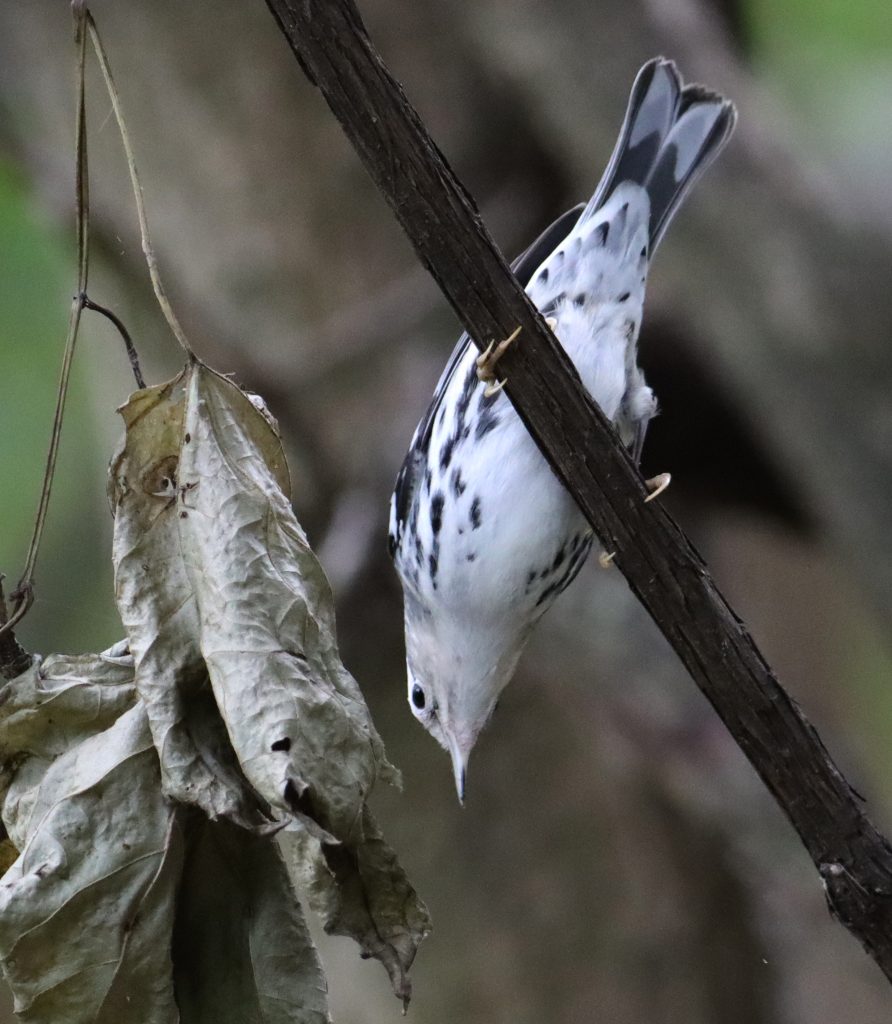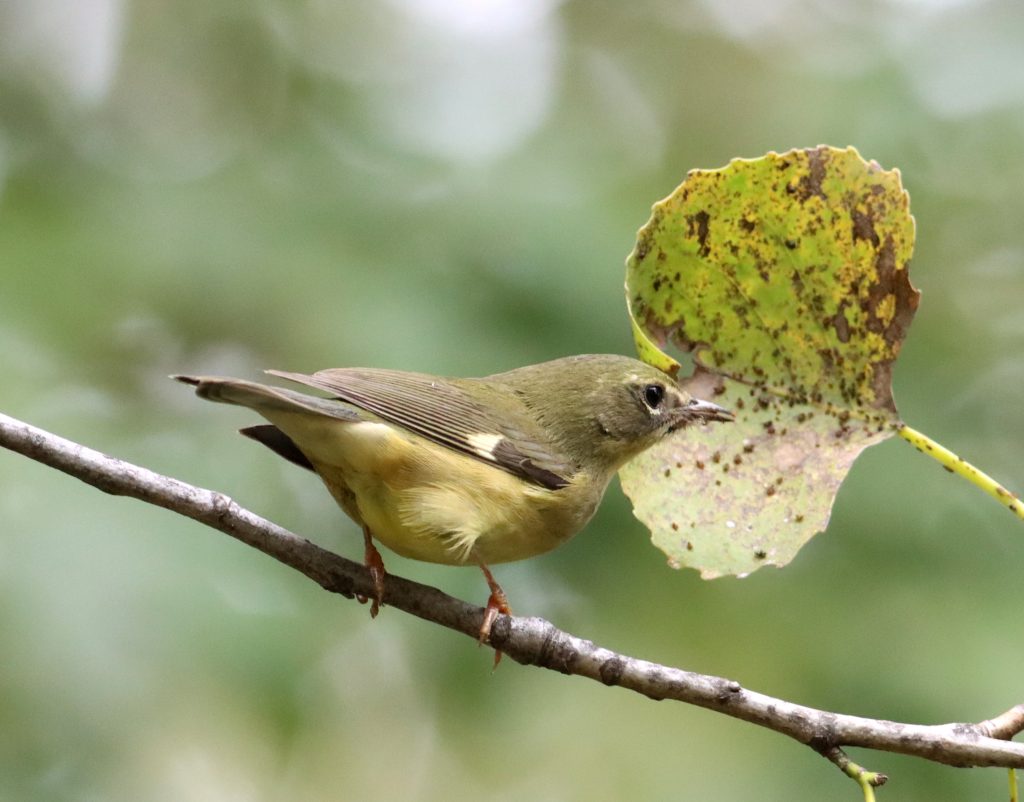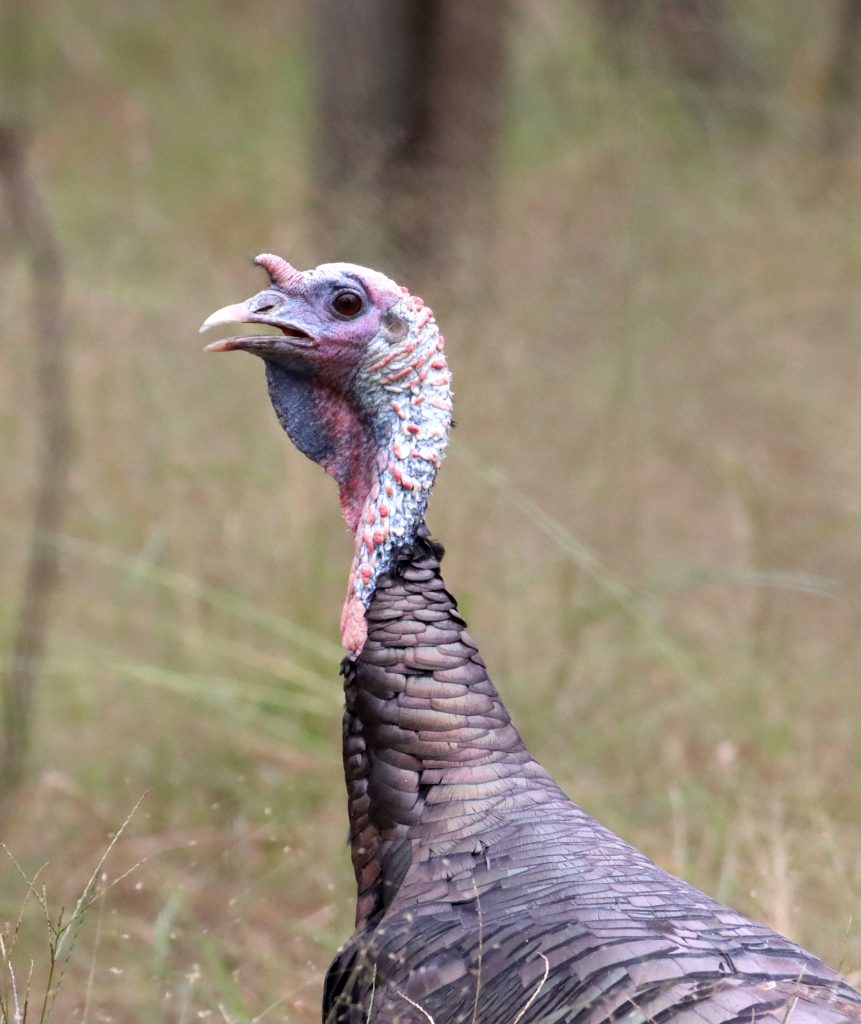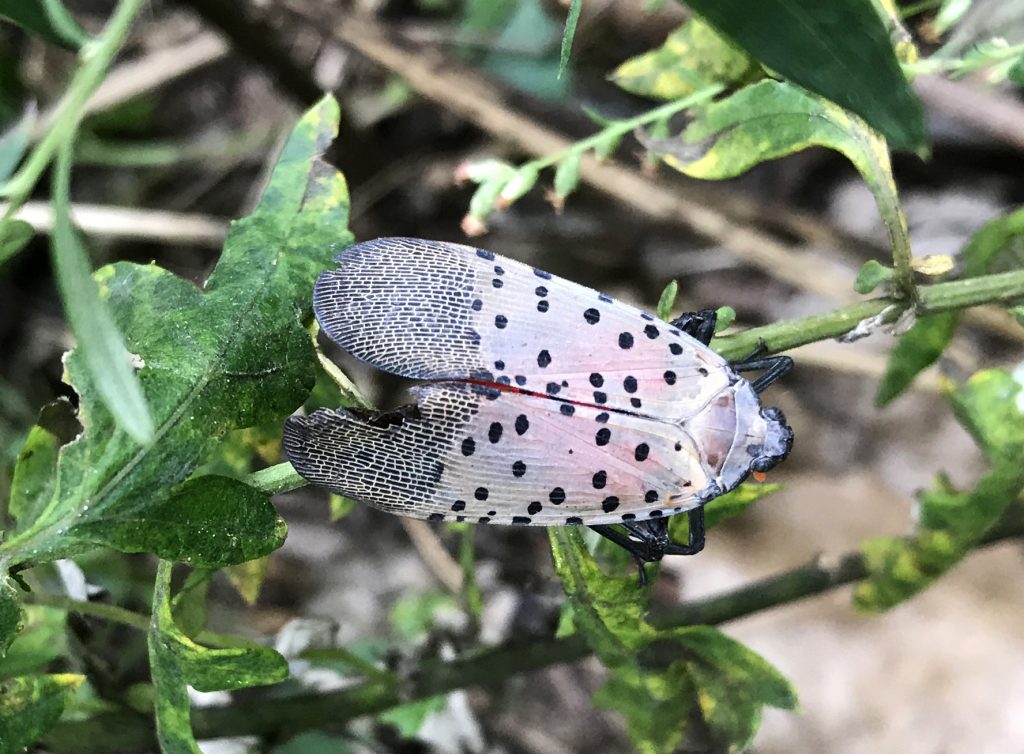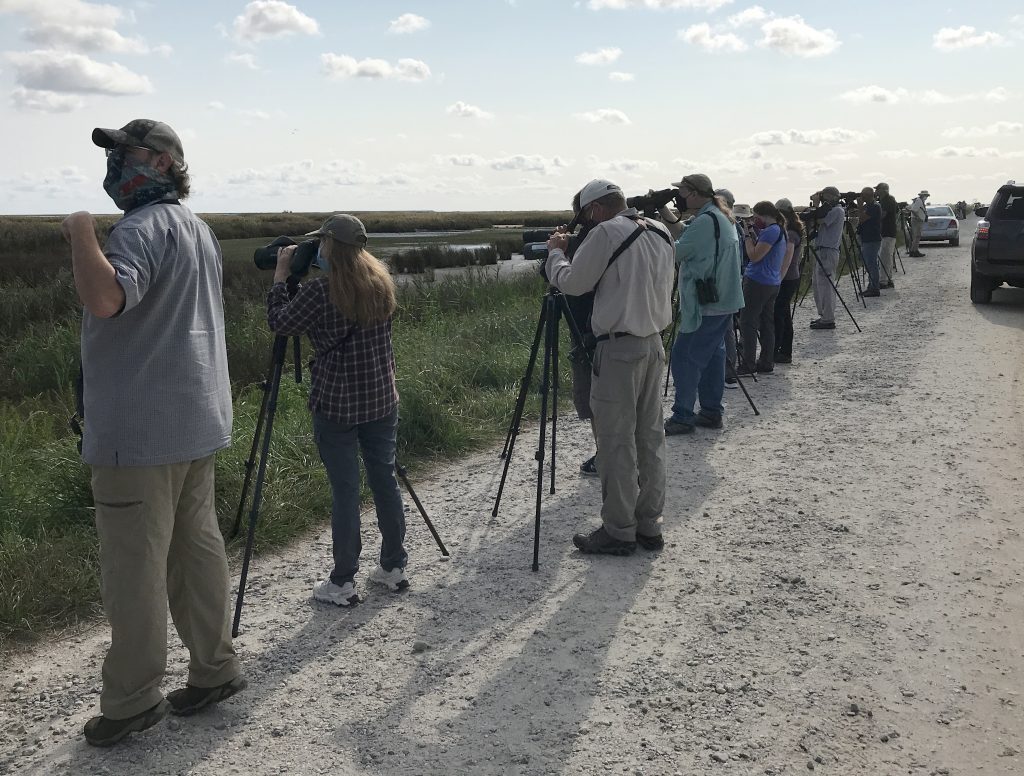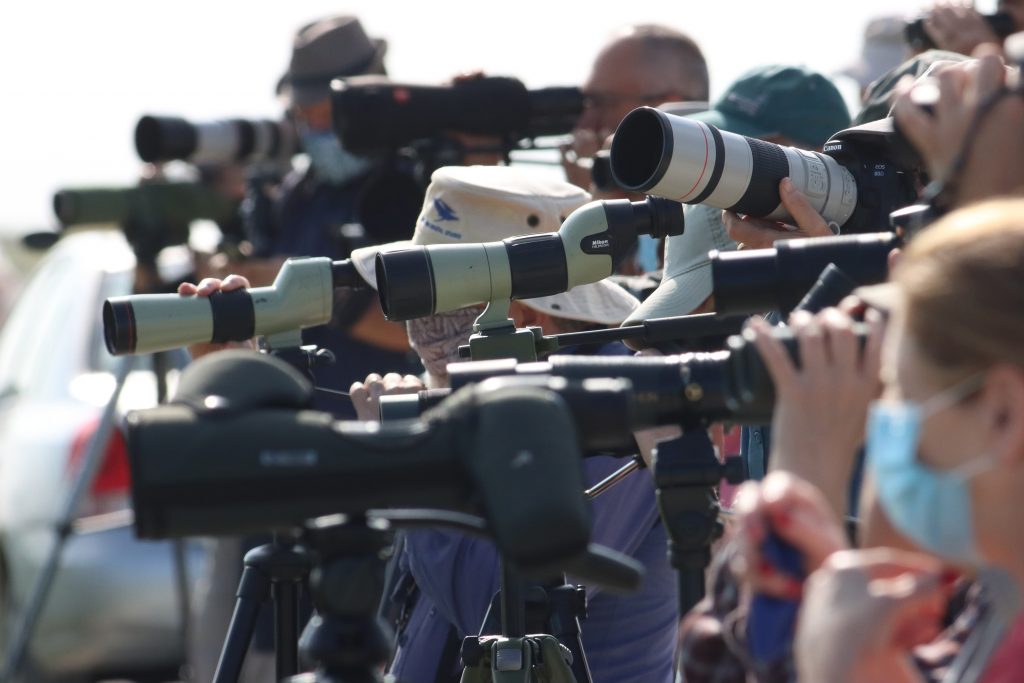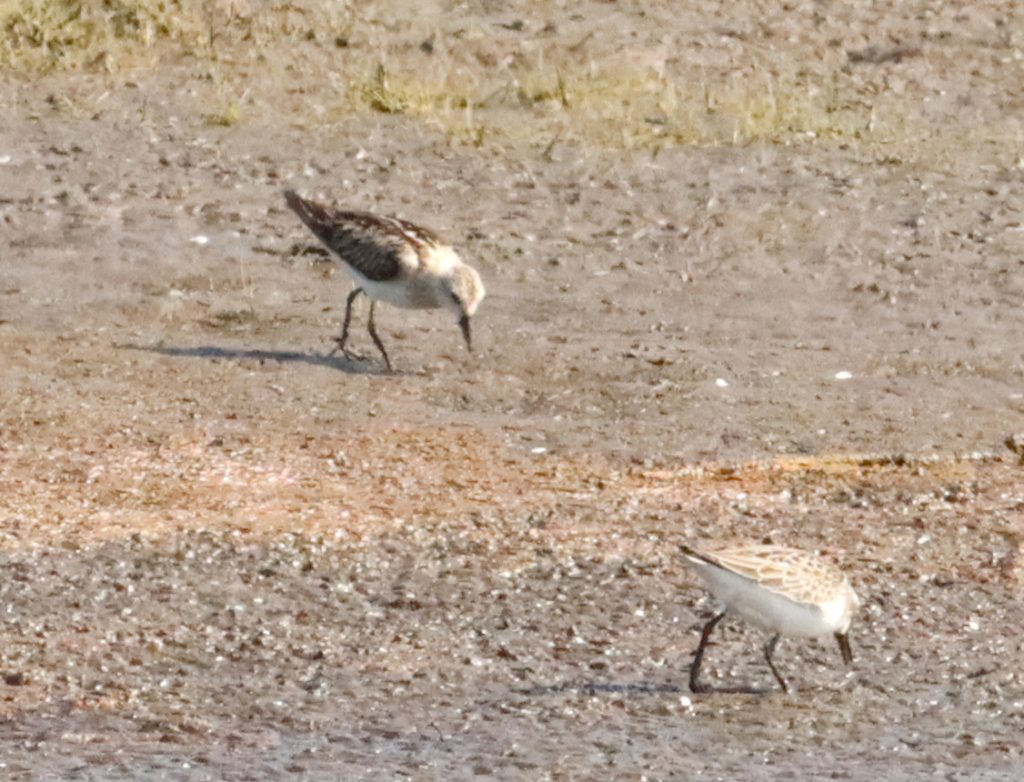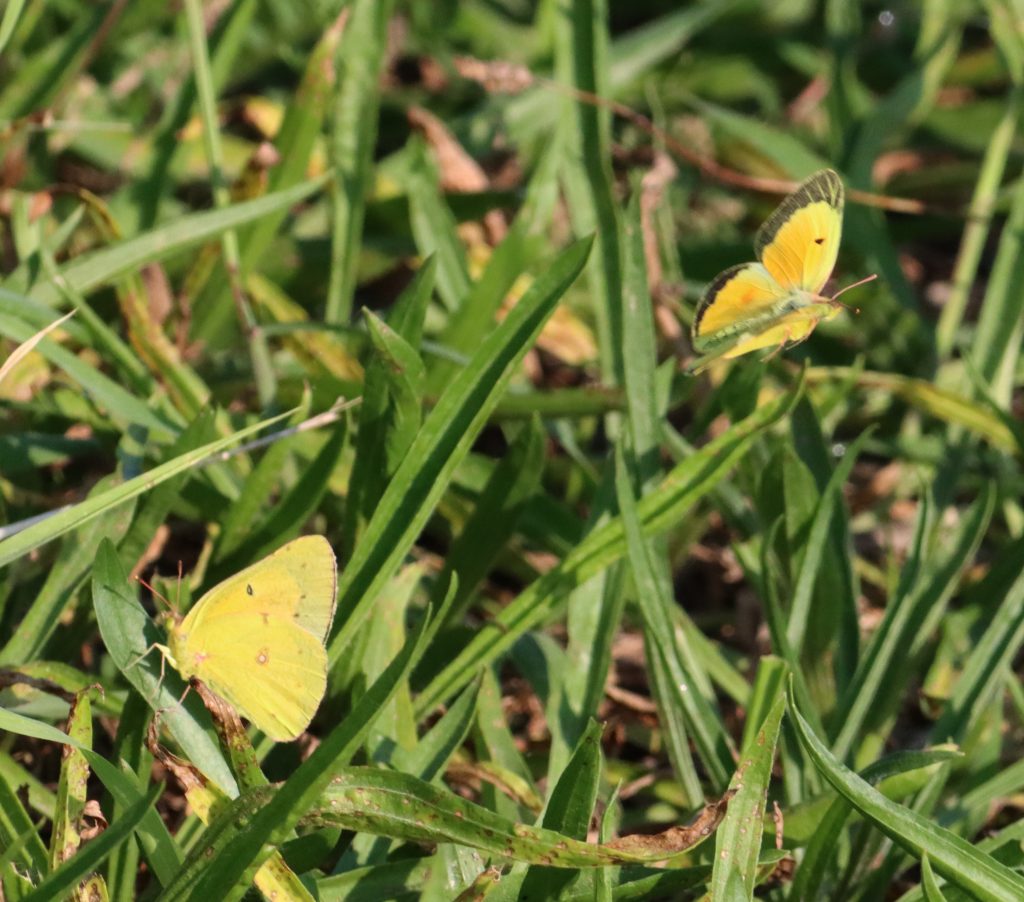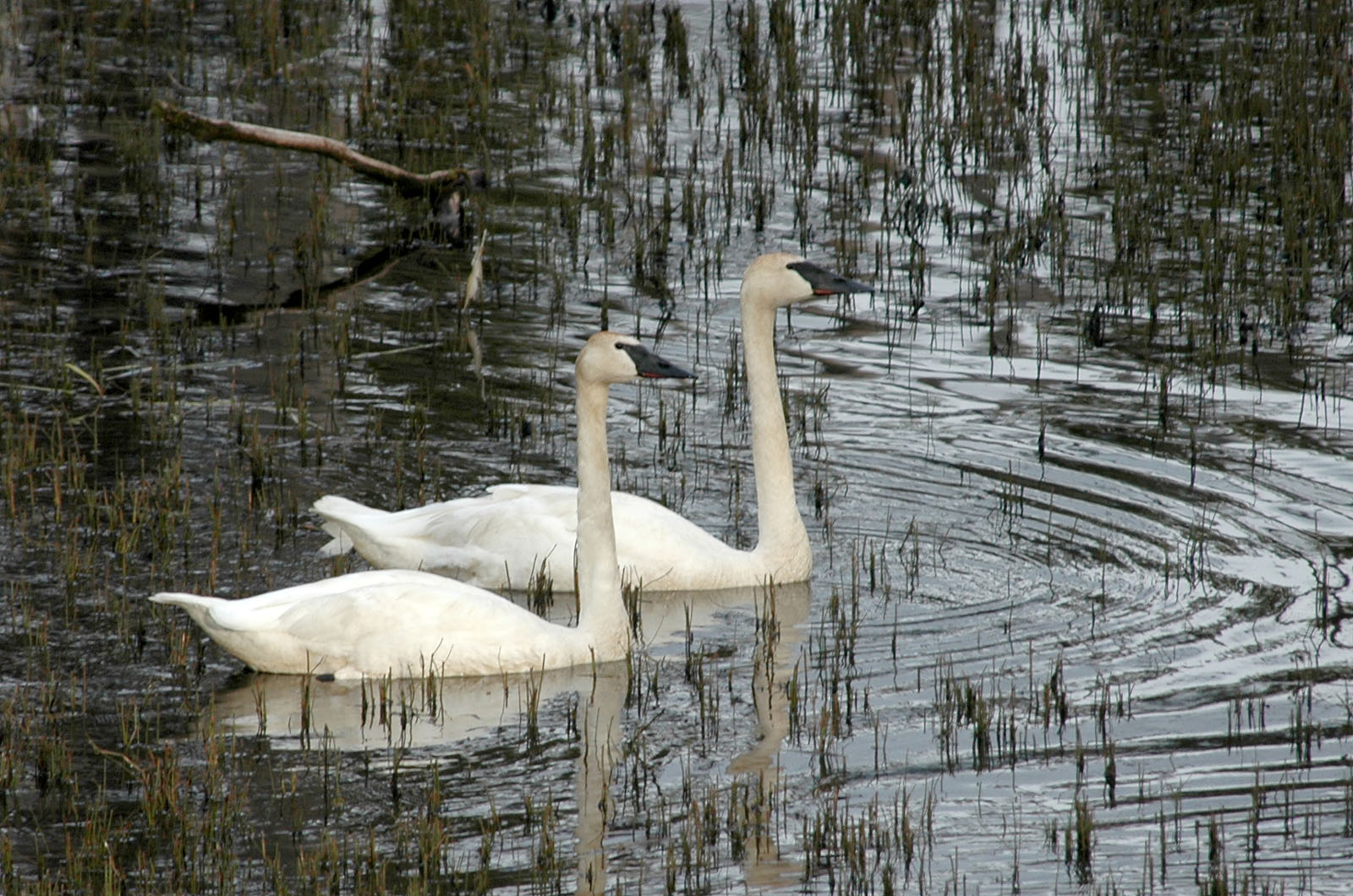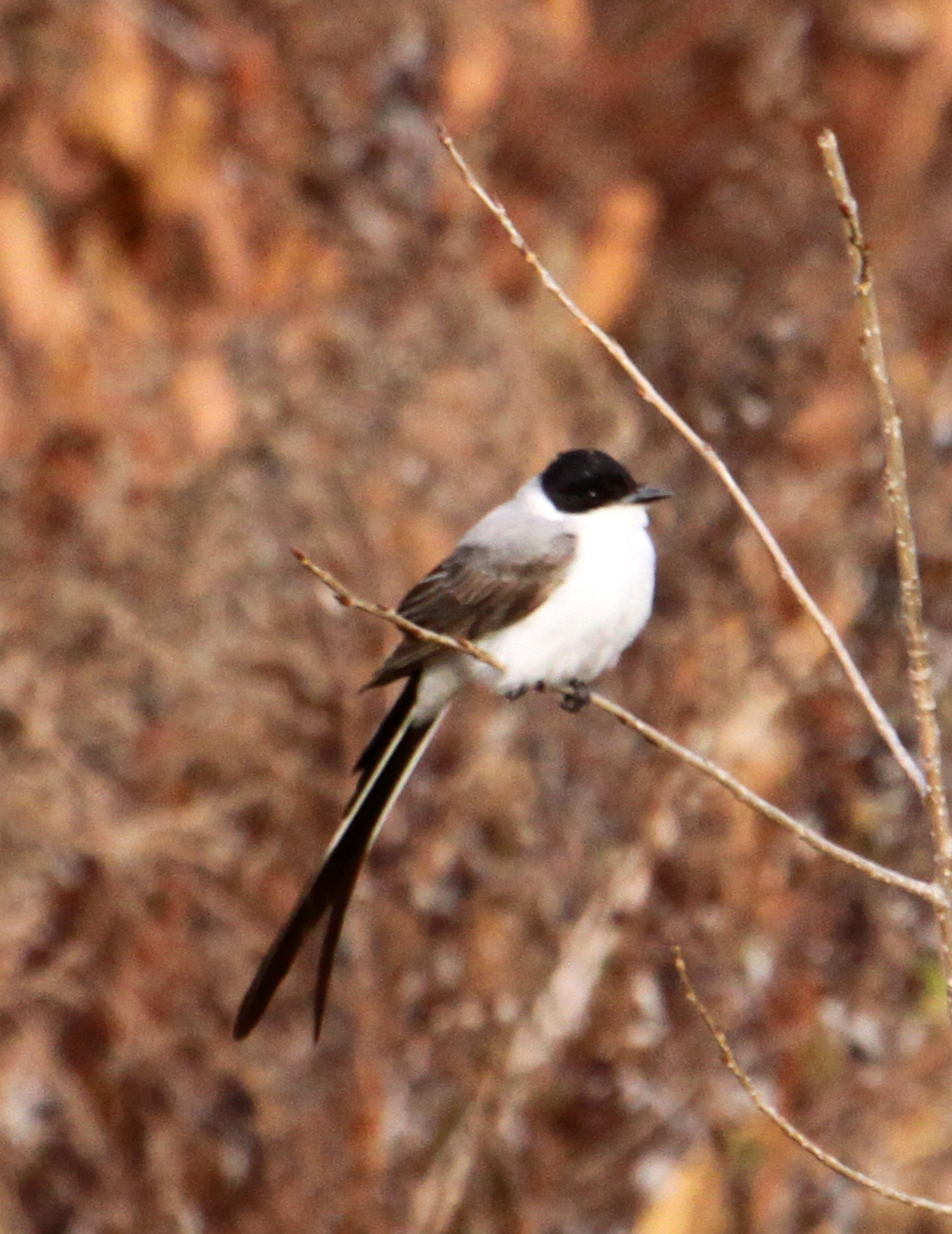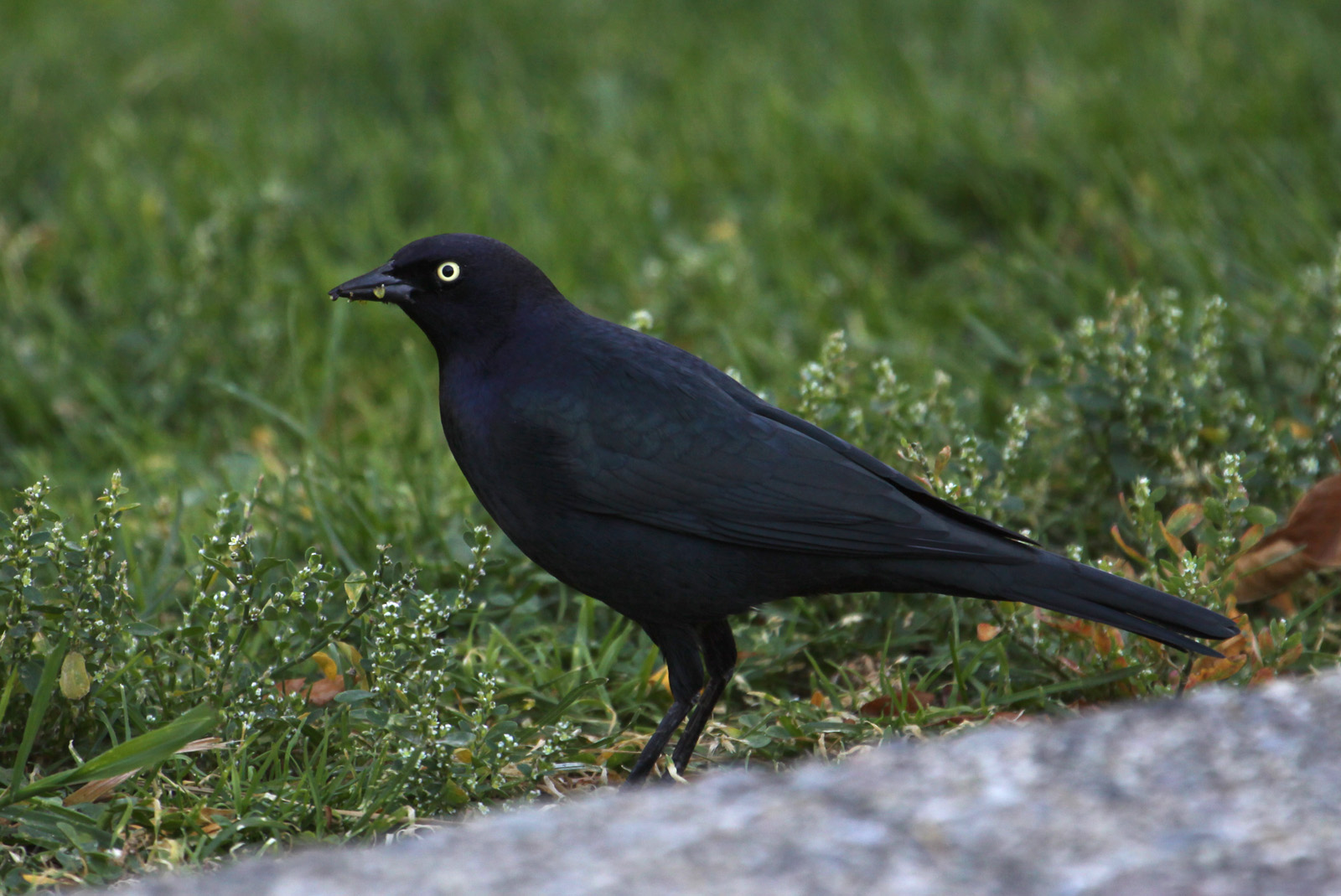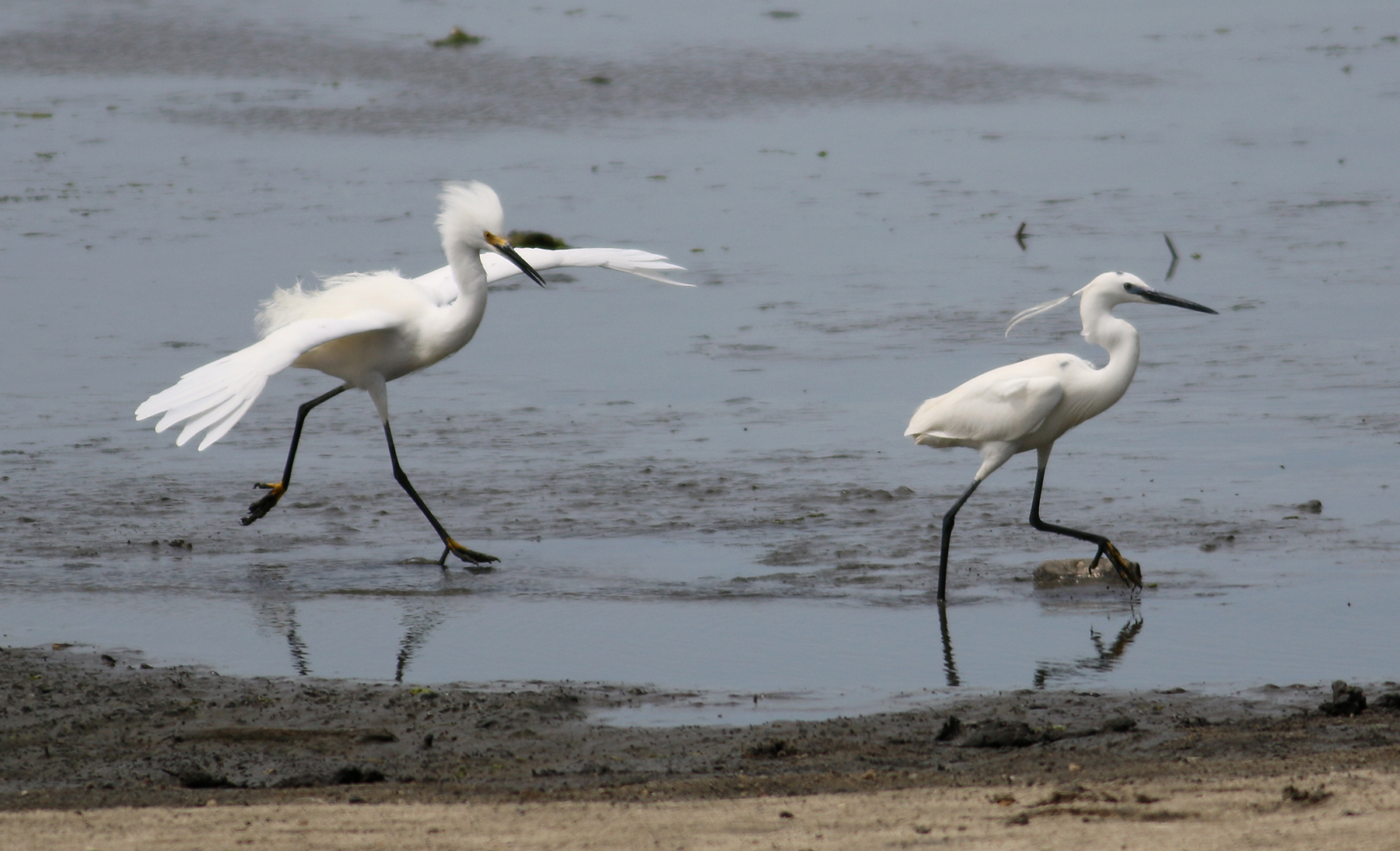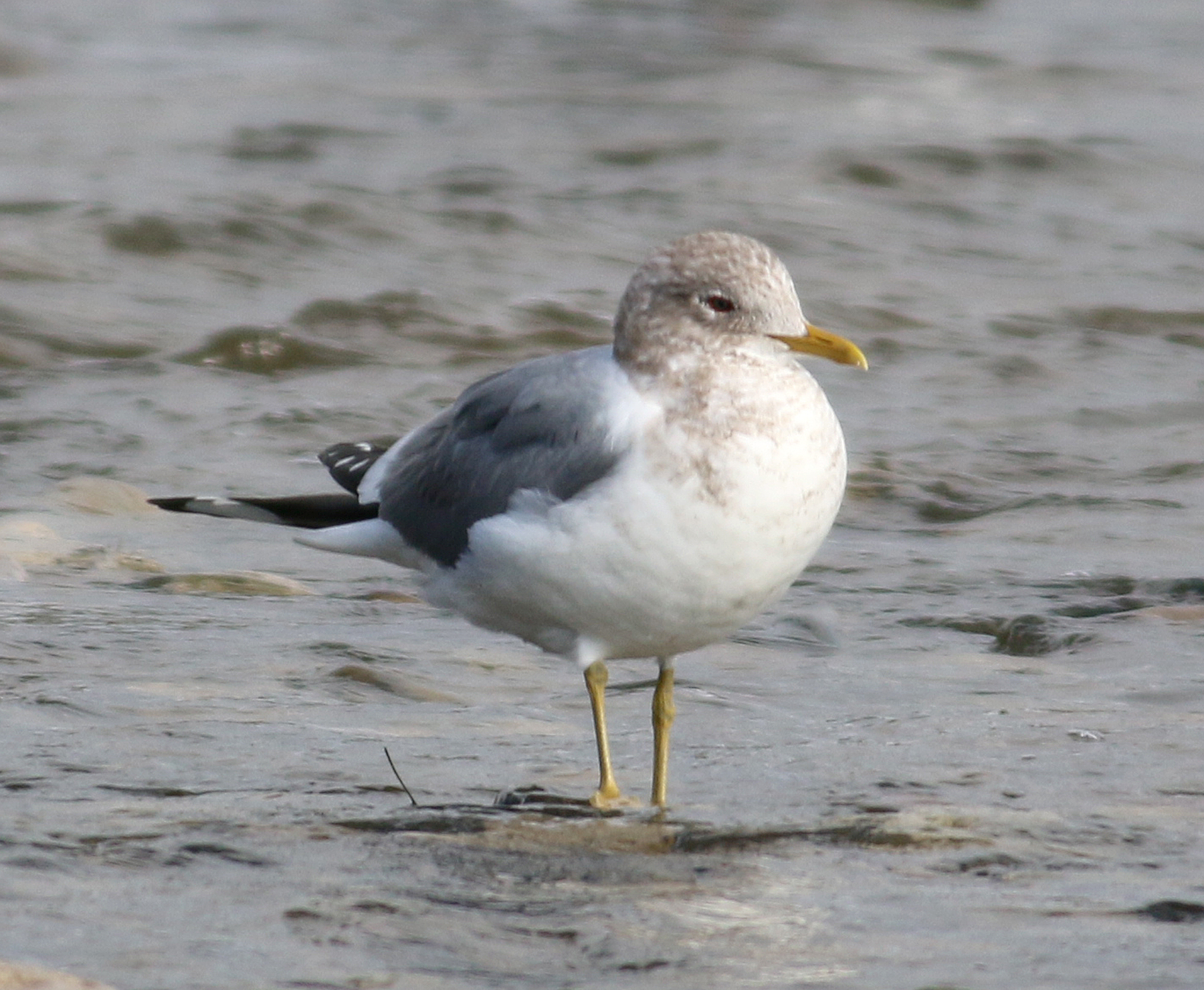It looked like the weather was going to be cooperative today, approaching 50 degrees again, with mild winds. On a February day with that weather prediction, I like heading to the inlets to search for birding action. So Jeanine and I ventured out to the south Atlantic City Jetty along Absecon Inlet and very soon after starting out we heard a flock of at least 200 birds that sounded like American Oystercatchers. But Oystercatchers don’t come in flocks that big, do they? In winter? Indeed that’s what they were, getting the walk off to an impressive start.
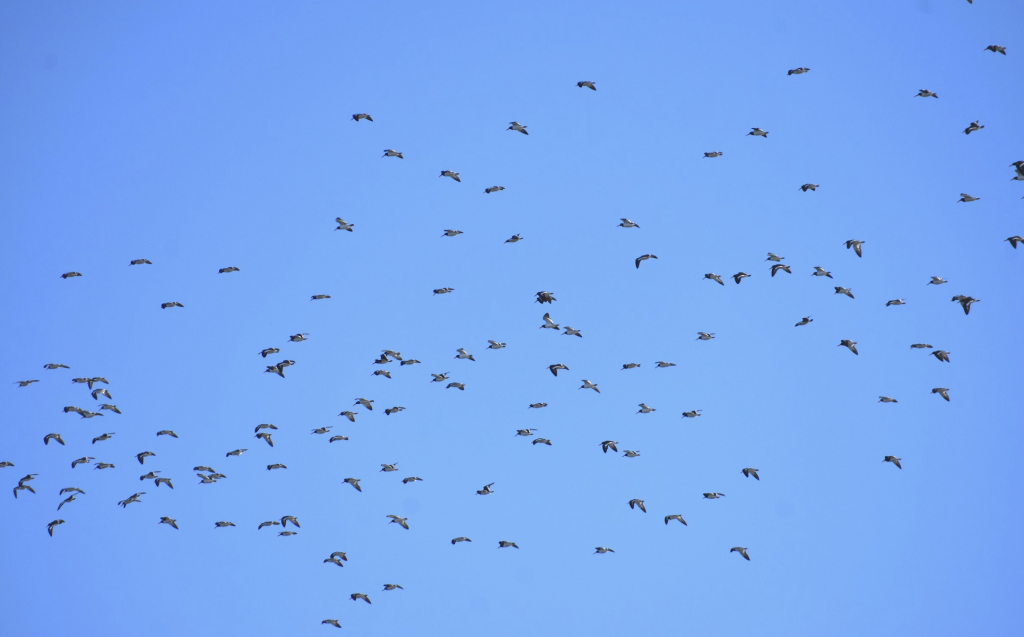 I count 167 Oystercatchers in just this part of the flock in Jeanine’s photo, so 200 birds is a likely underestimate.
I count 167 Oystercatchers in just this part of the flock in Jeanine’s photo, so 200 birds is a likely underestimate.
As we left the boardwalk and approached the jetty, there were plenty of loons around, and we spotted a nice group of eighteen Purple Sandpipers, which we don’t see often here, so that was another nice surprise.
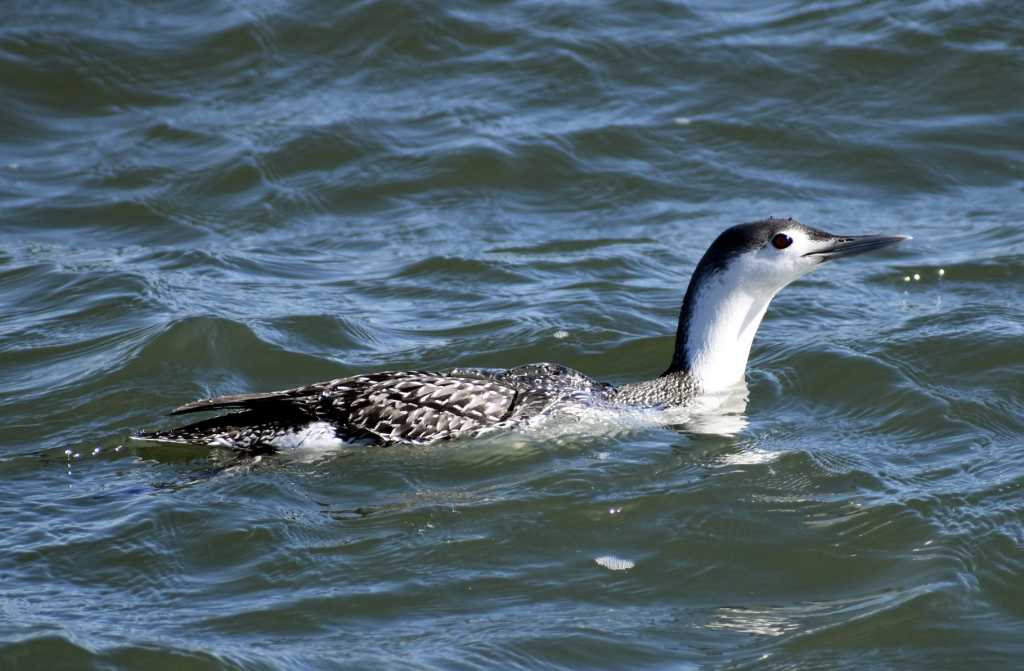 There were plenty of loons around today. Here’s a nice close-up of a Red-throated Loon.
There were plenty of loons around today. Here’s a nice close-up of a Red-throated Loon.
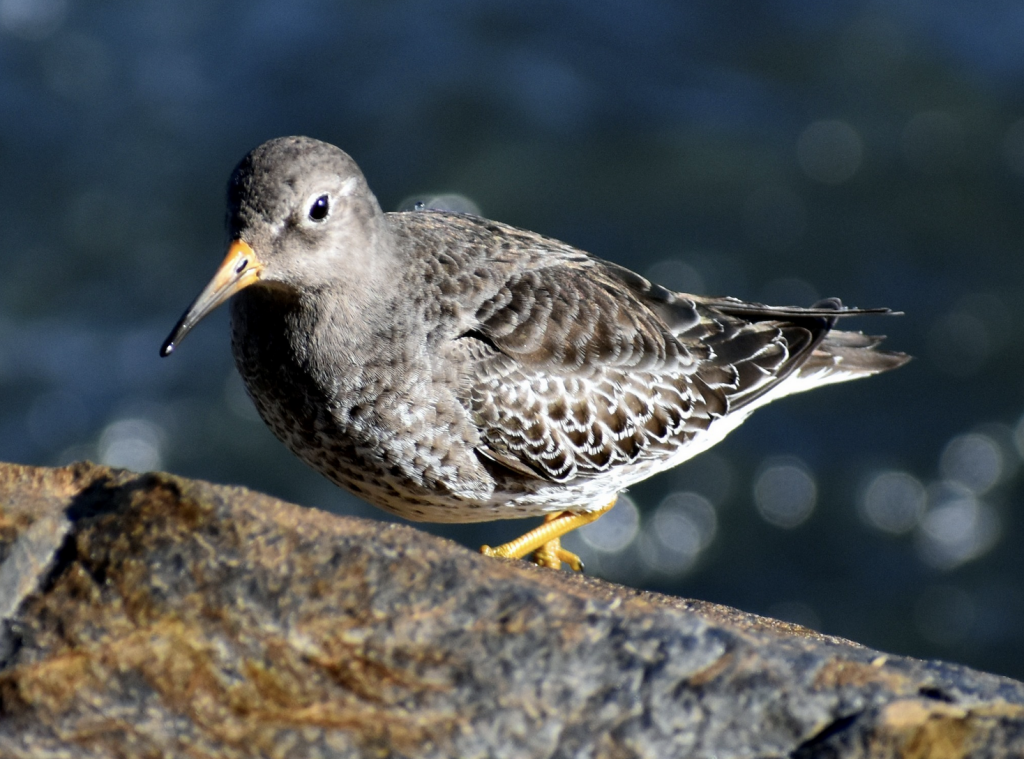 We saw more Purple Sandpipers today than we’ve ever seen at this location.
We saw more Purple Sandpipers today than we’ve ever seen at this location.
Soon after we started seeing our first Razorbills. They were not as numerous today as on our last outing (see here), but on nearly any scan we could expect to see at least one, so that was great. In fact, today they seemed to be foraging in pairs, unlike last week when they were in larger groups. Let’s face it; it’s always fun to see Razorbills.
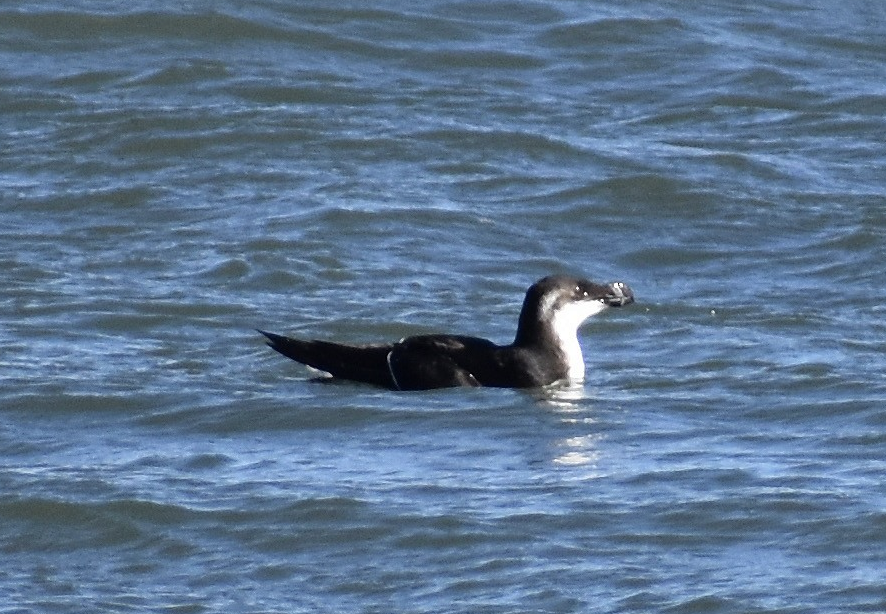 Razorbills have been easy to spot, but they can be very active, often only spending a second or two at the surface before another feeding dive.
Razorbills have been easy to spot, but they can be very active, often only spending a second or two at the surface before another feeding dive.
Our main targets/hopes today were other alcids or some of the rarer gulls, so we were somewhat disappointed that our birder greed was not fulfilled after about two hours or so. As we were sitting there, I cleaned up a bit, getting rid of a bunch of fishing line that had accumulated on the jetty. Who knows, maybe good karma would bring us good birds in return, right? Soon afterward we essentially gave up and started heading back to our favorite local Indian restaurant. As we approached the base of the jetty, we stopped to take a photo of the scene.
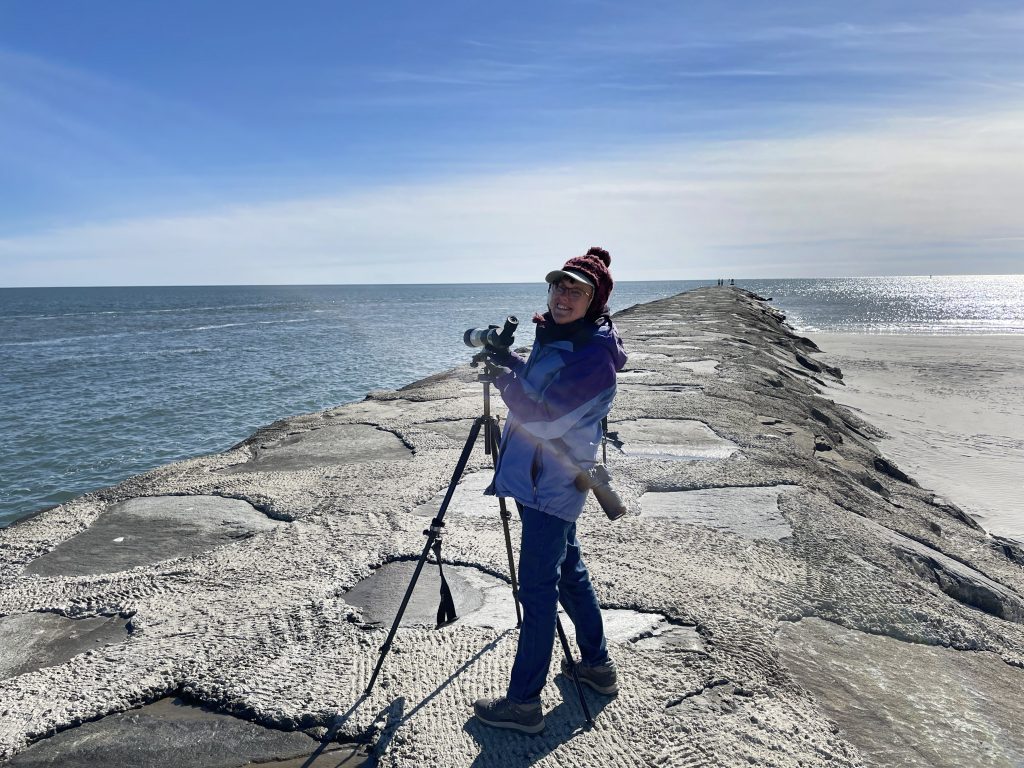 You can see that it’s a nice place to do a jetty sit, with reliable footing and hardly anybody else in sight (unlike other local jetty hangouts).
You can see that it’s a nice place to do a jetty sit, with reliable footing and hardly anybody else in sight (unlike other local jetty hangouts).
Immediately after taking that photo, I turned toward the water and spotted an alcid ~50 yards away that appeared to have a black line on a white cheek, unlike what I had seen in any Razorbills, but it was a very quick look as it was diving. Darn! I’d love to get another look at that bird. As alcids are wont to do, it remained under the surface for what seemed like an eternity, but it re-surfaced 100-150 yds away, where we could see that it had a bill that was more pointed than a Razorbill, but once again it was a quick (and this time distant) view. With two clues that it was not a Razorbill, we raced back out to the tip of the jetty. Finally we were able to get good scope views, conferred with Big Sibley (yes, we actually brought the field guide into the field), and found out then that we were looking at an adult non-breeding Common Murre!! The key identification features are a pointed bill and a black line across a white cheek that the other alcids lack. Common Murres are not common at all in NJ, especially from land. The last sighting in Atlantic County was in 2000 (and before that, in 1959!), and the last one documented with a photograph in NJ was in 2014. I celebrated with a brief Common Murre dance, but now we needed photos. By this time the bird was too far out for Jeanine to get decent photos with her 300 mm lens/camera, and my SLR camera battery was dead (of course). In desperation, I tried to get documentation shots with hand-held digiscoping, and fortunately that was successful as the bird drifted out beyond the inlet mouth, where it remained resting on the surface in that area for at least another 15 minutes until thoughts of chicken curry returned and we left for lunch. In the photos below we can see the black line across a white cheek, and the sharply pointed bill.
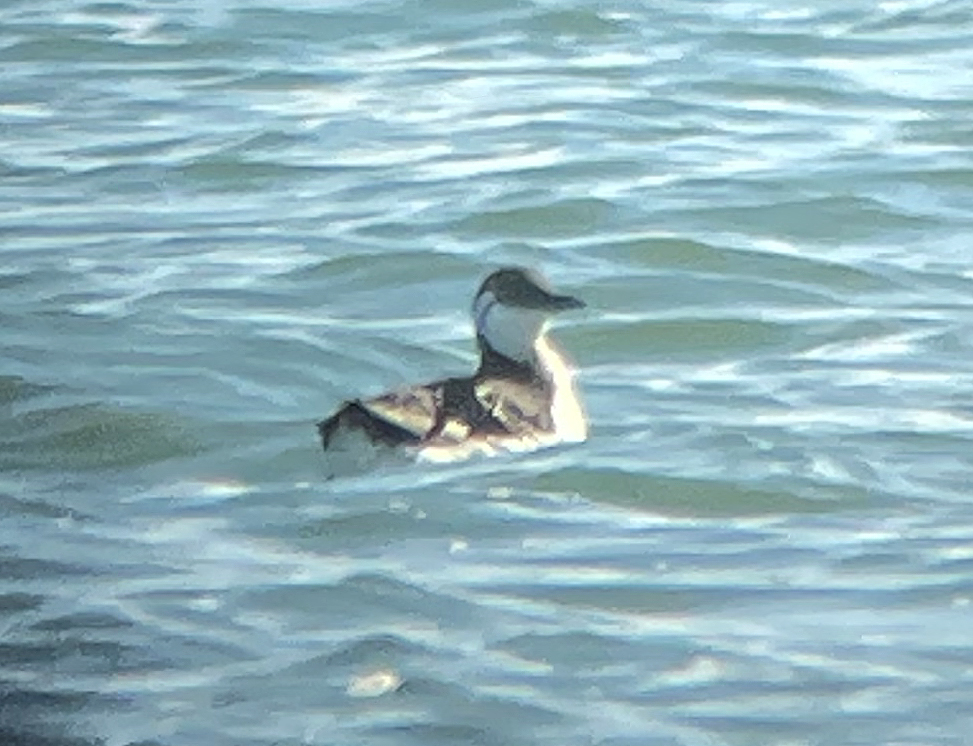 A heavily-cropped Monet-esque view of the Common Murre.
A heavily-cropped Monet-esque view of the Common Murre.
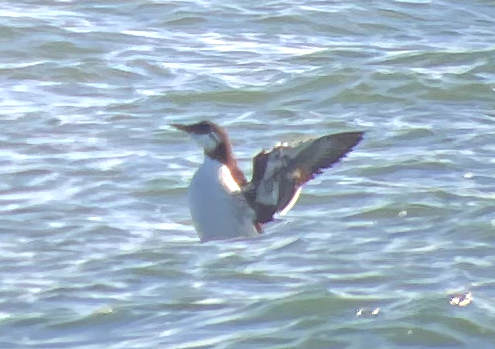 Common Murre flexing its wings.
Common Murre flexing its wings.
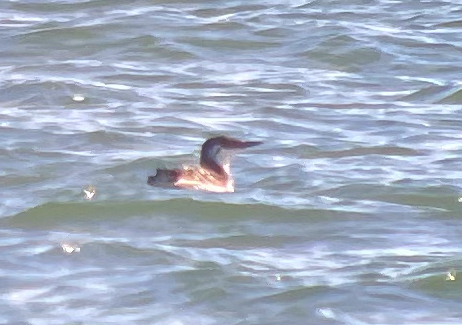 The loon-like dagger-ish bill of the Murre easily distinguished it from the Razorbill’s wider and blunter bill.
The loon-like dagger-ish bill of the Murre easily distinguished it from the Razorbill’s wider and blunter bill.
So did we just get lucky once again, or was it good karma in return for our small clean-up effort? You be the judge. Try doing a small clean-up the next time you’re outdoors and see if it works for you too.
